…continued from Part 1.
Gregor and I finally left Quito after spending a whopping 16 days in the city. We spent most of that time camped at Aire’s Cabin working on major van projects (in between Gregor’s work days and our normal van chores). With projects completed, it was time to move on and see the rest of Ecuador.
Our first destination was Oyacachi, a quiet mountain town known for its thermal springs. We first learned about the town through Gorm and Eli (Bee-Individual), whom we first met over a year ago in Patzcuaro, Mexico.
When Gorm learned that we were in Ecuador, he sent us a message saying that we should not miss Oyacachi as it was a beautiful drive – one of their favourites in South America. Our new Ecuadorian friends, Chalo and Sandra (Suramerica Sin Fronteras), confirmed that the drive to Oyacachi was indeed beautiful but they also added that we should continue driving to another town called Papallacta as the route is spectacular.
When multiple VW van owners recommend a route, you just have to take it.
Quito to Oyacachi
The road between Quito and Oyacachi is only 110 km, but it was a 4-hour one-way trip due to the mountain terrain.
On the way there, we took one of Sandra’s recommendations and stopped for coffee and bizcochos (corn biscuits, a popular snack around the town of Cayambe).
The biscuits were a little greasy and the coffee was instant, but it gave us enough fuel for the long uphill drive ahead of us.
Once we got to Oyacachi, we followed instructions that Chalo gave us before we left Quito: Find the town president and get a permit to drive the restricted road between Oyacachi and Papallacta.
Chalo said that the high-altitude road connecting Oyacachi to Papallacta is in protected parkland so you can’t drive it without an official permit. If we didn’t get the permit, not only would we miss out on the scenery but we’d also have to backtrack several hours towards Quito to access the roads of eastern Ecuador.
Gregor and I drove up and down Oyacachi’s dirt roads in the rain, asking locals where we could find the town president. It was clear that I wasn’t on my game in the Spanish department because every time someone gave directions we ended up completely lost. Finally, I found a lady in a shop who led me to a run-down building where I met a little boy who took me to the top floor where I met a teenaged girl who went into a room to fetch the president, Mauricio.
I asked Mauricio for a permit to drive to Papallacta. He said he no longer had the authority to issue permits – I could only get it from the Minister of the Environment in Cayambe (2 hours back from where we came). Although his response was disappointing, we weren’t surprised by it.
After all that running around, we decided to make the most of our trip and take a dip in the town’s thermal springs.
While getting our tickets for the hot springs, I took a chance and asked the nice fellow at the booth where I could get a permit to drive to Papallacta. He said (in Spanish): “Oh, the official who issues permits lives just over there [points to a cluster of houses up the road]. I can take you to him tomorrow morning. What time do you need it?” I was dumbfounded. The president of the town couldn’t help me but this random dude in a ticket booth knew exactly what I needed.
I got the permit the next morning and we were on our way.
The photos don’t really capture it, but our two-hour drive through the park’s tropical alpine meadows (pàramo) was beautiful and pristine. We passed dozens of gushing waterfalls and babbling brooks and had panoramic views of the grassy meadows above and the green valleys below. There were only a few other vehicles on the gravel track and there were no towns along the way to pollute the scenery. It was just me, Gregor, and Lucky in our element.
The route from Oyacachi to Papallacta is one of our most memorable drives in South America to date.
Papallacta to Tena
The gravel road that led us into Papallacta turned into smooth asphalt and we zoomed down the highway to the town of Tena, located in eastern Ecuador’s hot and humid jungle region.
On our way there, Lucky’s front wheels made the same high-pitched wheezing noise that we first heard in Quito, reminding us that her wheel bearings needed attention. On top of that, there was a familiar clunking sound coming from Lucky’s rear axle – the CVs that we replaced in Panama were acting up after only 5 months.
We were incredibly fortunate to have camped that night at Hostal Zumac Sisa. The parking area had a concrete pad and a covered roof – a perfect workspace that kept the van cool during the sunny mornings and kept us dry in the rainy afternoons.
Since our parking spot was so ideal, Gregor decided to do some other van maintenance…
The hostel owners, Pablo and Marcia, were super friendly and did whatever they could to help us complete our van projects over the course of three days. They offered us the use of their tools and helped us to find automotive supplies in town. Pablo even came with me to multiple shops to translate and make sure that I got the right parts for our van.
Tena itself isn’t much of a destination since it’s a working class town, but we were grateful that we stayed there for several days. The town had exactly what we needed to finish the van repairs and we were able to get back on the road thanks to our generous hosts.
Tena to Baños to Cotopaxi
After leaving Tena, Gregor and I felt really confident about the state of the van and continued southward to explore the lush tropical terrain of eastern Ecuador.
At Pequeño Paraiso, we met Nicolas and his 5-year-old son Michael from Montreal, Canada. They were backpacking through Ecuador together.
While camped at Rio Verde, I was about to cook some dinner when I discovered that our propane hose was missing – it’s the one that connects our propane bottle to the stove inside the van. After we turned the van inside out looking for the hose, Gregor finally remembered that he removed it back in Tena while doing the van repairs. He was certain that the hose was still at Hostal Zumac Sisa.
A phone call to Pablo confirmed that the hose was nowhere to be found on his property. This wouldn’t have been such a big deal except that our hose was made to fit our North American propane bottle. In South America, standard propane hose connectors are different.
We drove northward from Baños to Cotopaxi National Park, stopping at hardware shops along the way in search of a replacement hose with the right connectors. We had no luck.
[Reg, if you’re reading this right now, we wish you were there. You would have laughed so hard watching us go from town to town looking for a hose with the right fittings. The local hardware vendors thought we were from outer space!]
We took a break from our hardware quest and camped near Cotopaxi Volcano for a few days hoping to get a glimpse of its perfectly cone-shaped, snow-capped peak. On our first day, we didn’t get to see the peak due to heavy clouds.
Gregor and I wanted to continue westward to Ecuador’s Pacific Coast beaches, but we really needed to replace our propane hose. It was clear that we couldn’t just buy a new hose off-the shelf – we needed to find a hose and fitting specialist.
I sent a desperate email to Arie, the campground owner in Quito, asking for any recommendations. He pointed us to a hydraulic shop only a short drive from his property. Well, you can guess what came next…
Lucky Returns to Quito (Again)
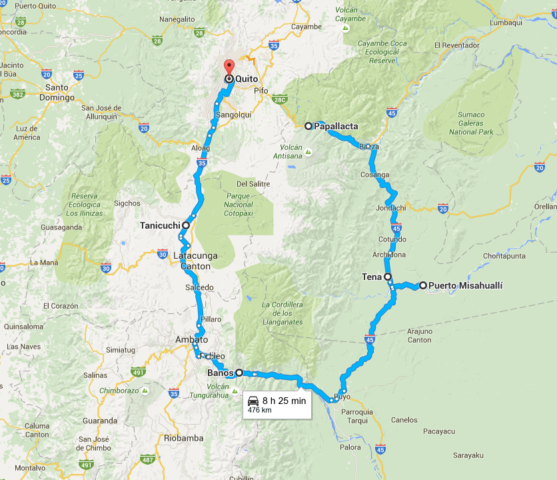
We reluctantly drove back to the capital to buy more parts for Lucky. The sting of having to backtrack to Quito became a little less painful once we met the friendly and helpful staff at Servimangueras. We got exactly what we needed – at the cost of $50 CAD ($40 USD).
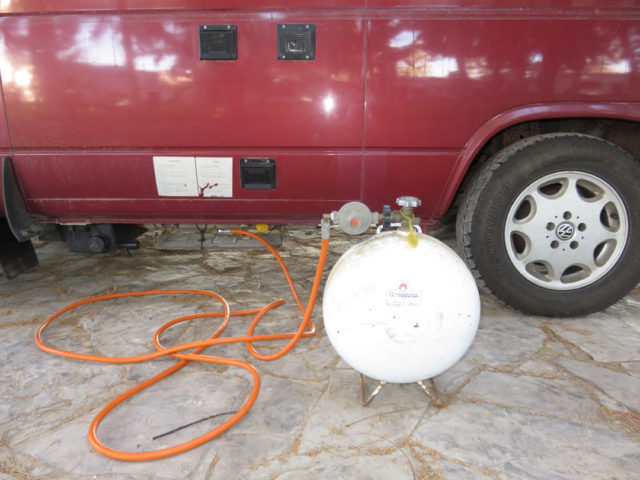
Our new neon orange propane hose
All our little van projects made us circle back to Quito twice over a span of four weeks. On the one hand, it felt like we were being sucked into a vortex that we could never escape. On the other hand, it felt a little bit like coming home.
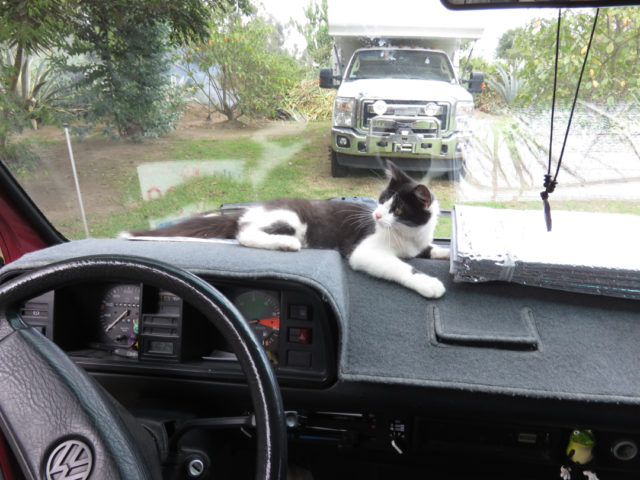
We were greeted by Moki the cat…
Gregor and I are grateful that we were able to work on Lucky in and around Quito, where we had access to great amenities and met many friendly and helpful people. Our van may require a lot of attention at times, but she certainly gives us interesting experiences in return.

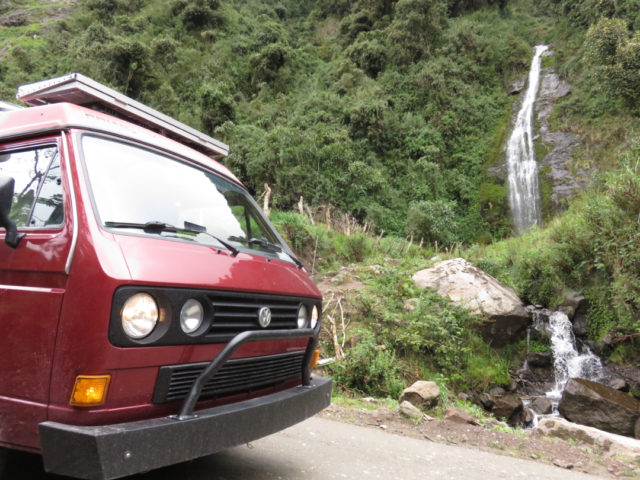
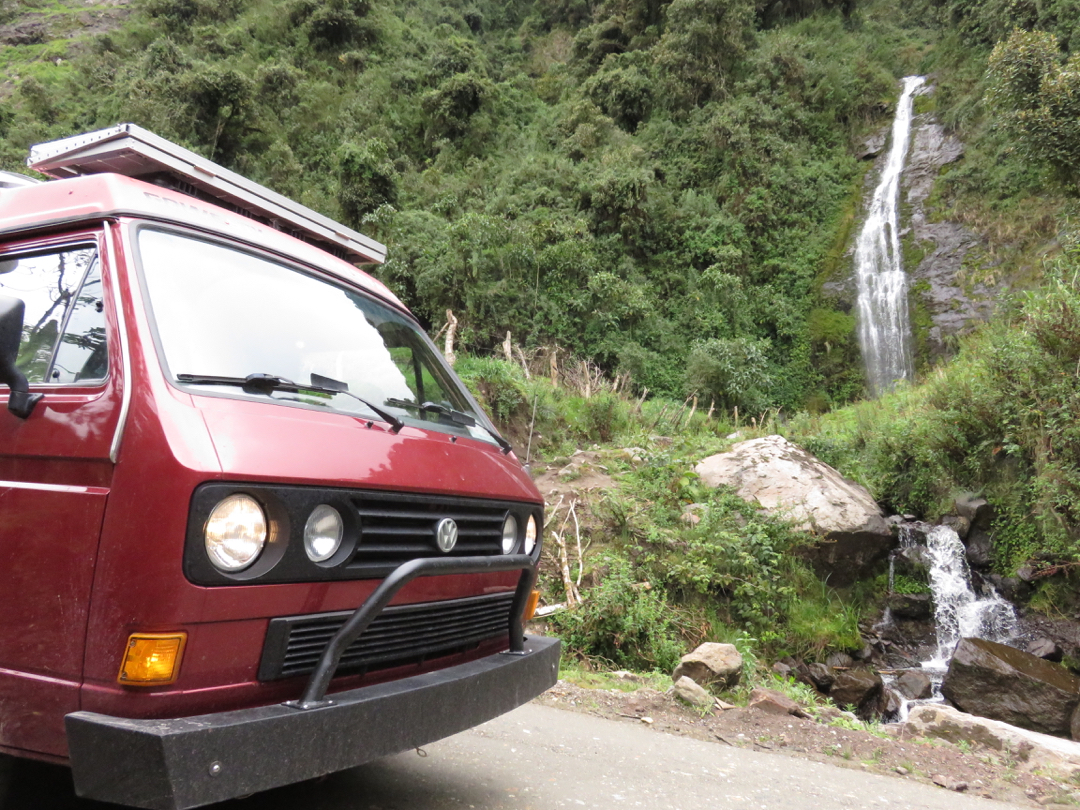

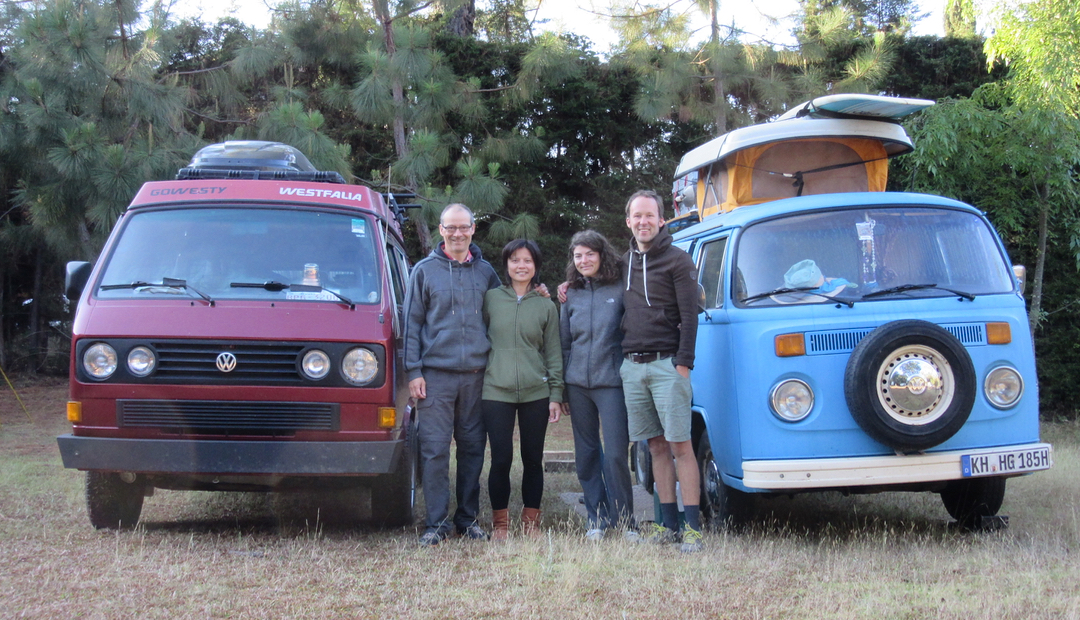
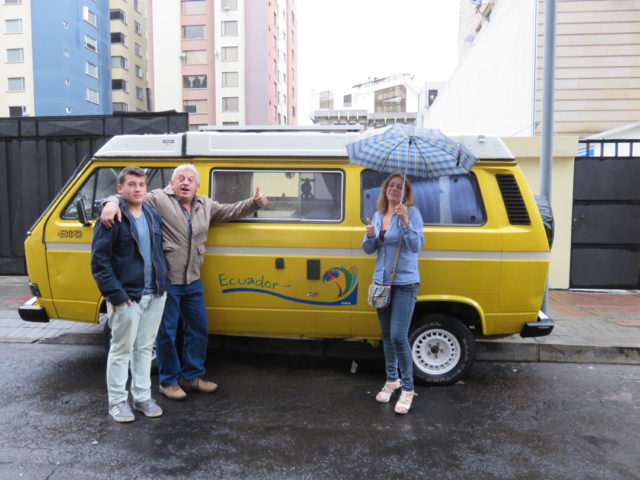
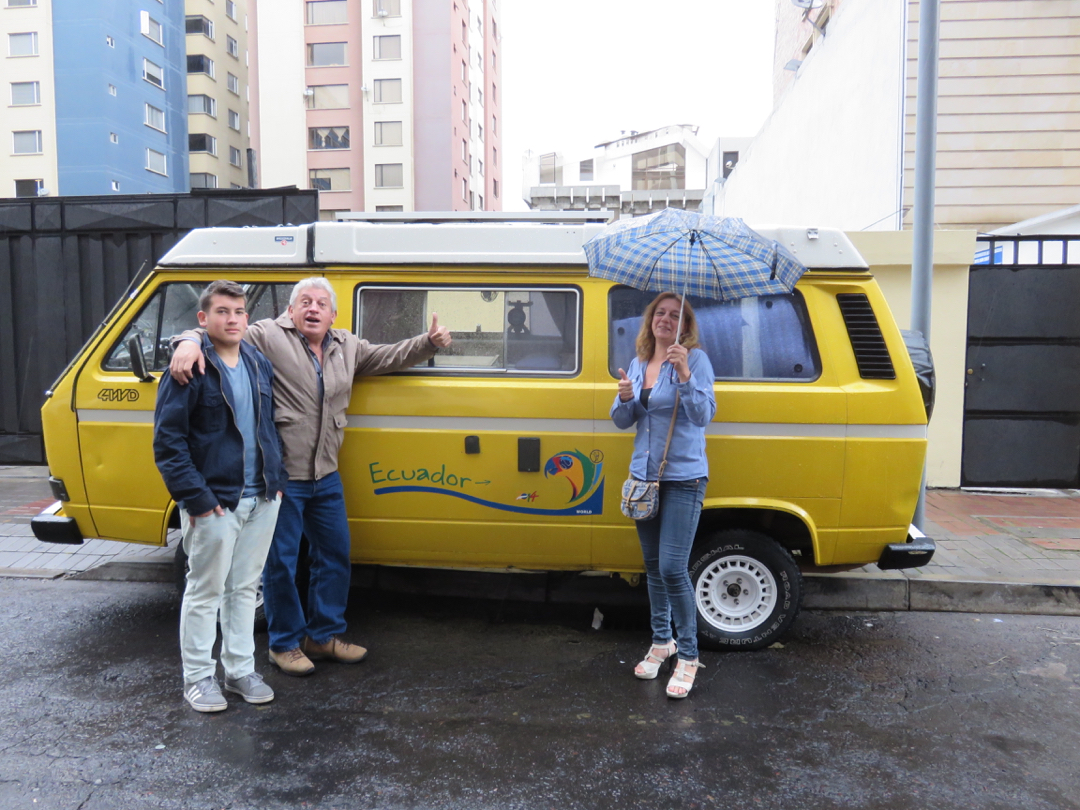
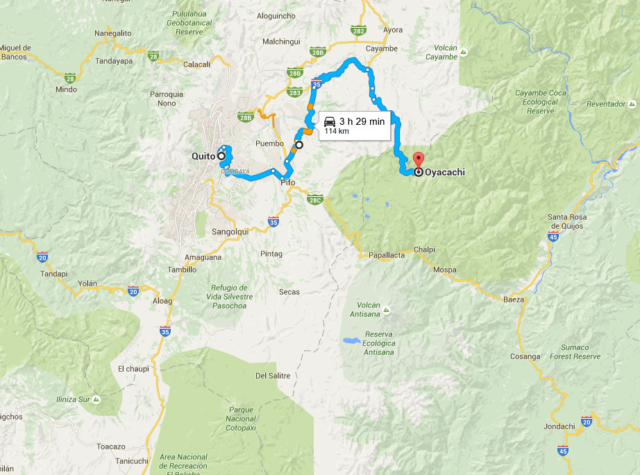
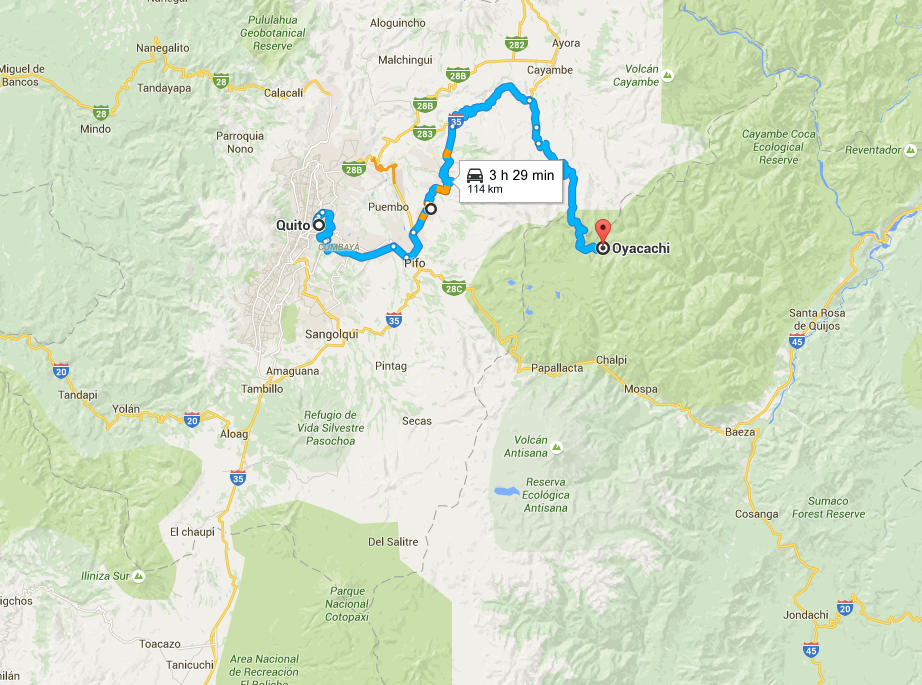
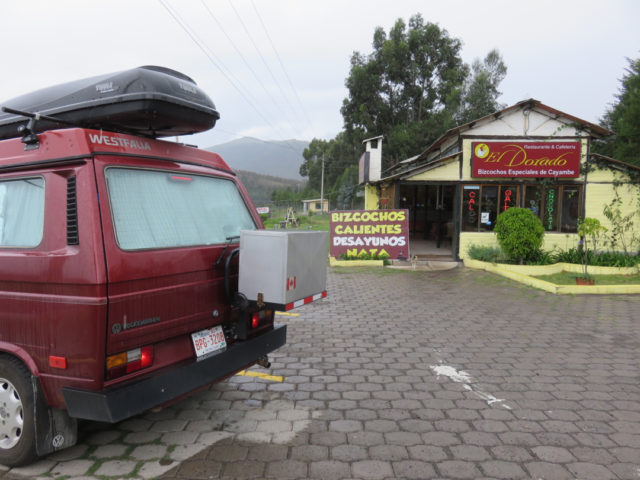
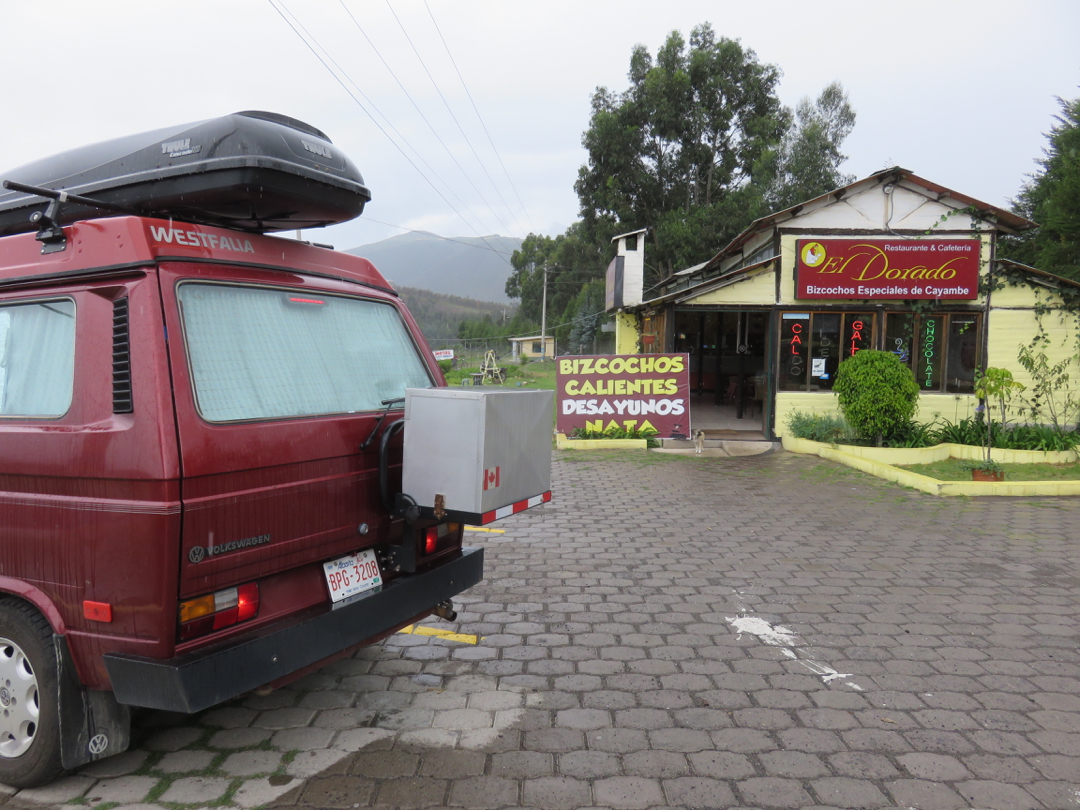
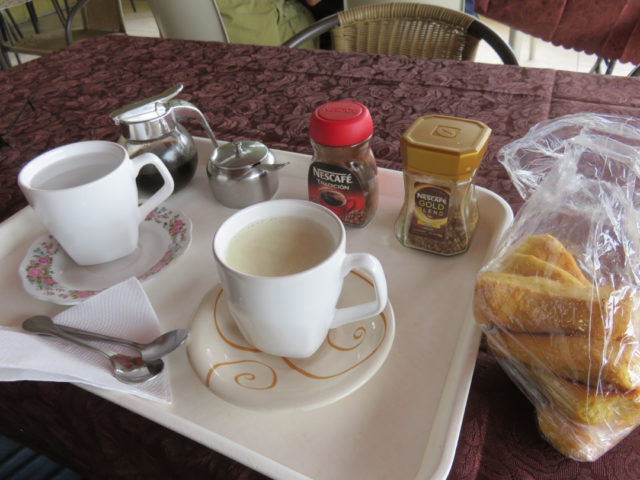
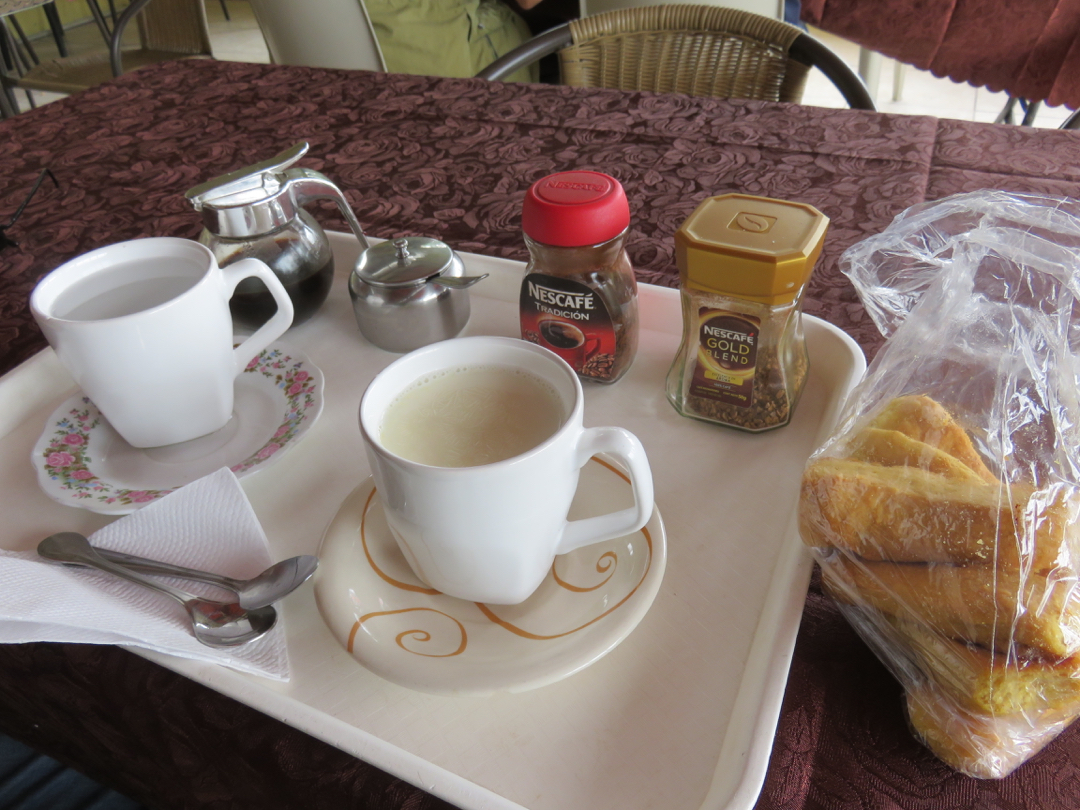

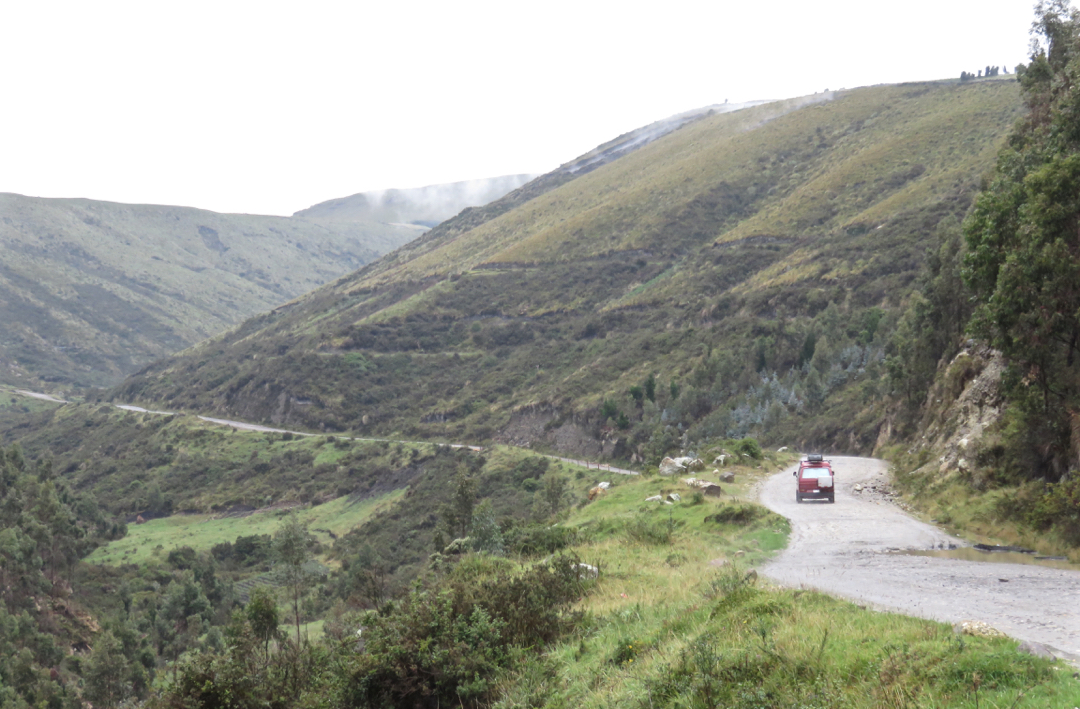
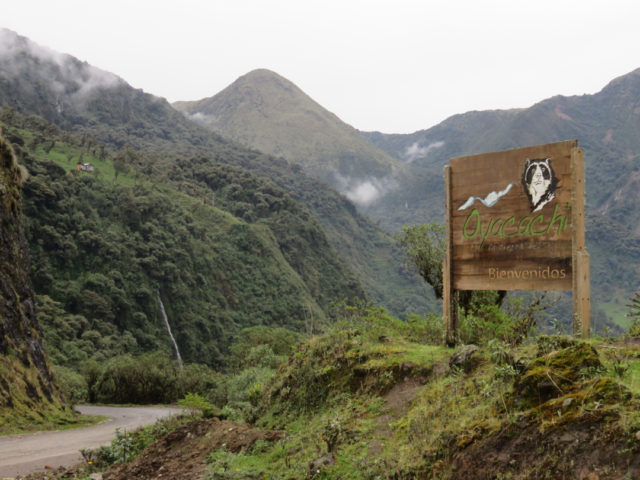
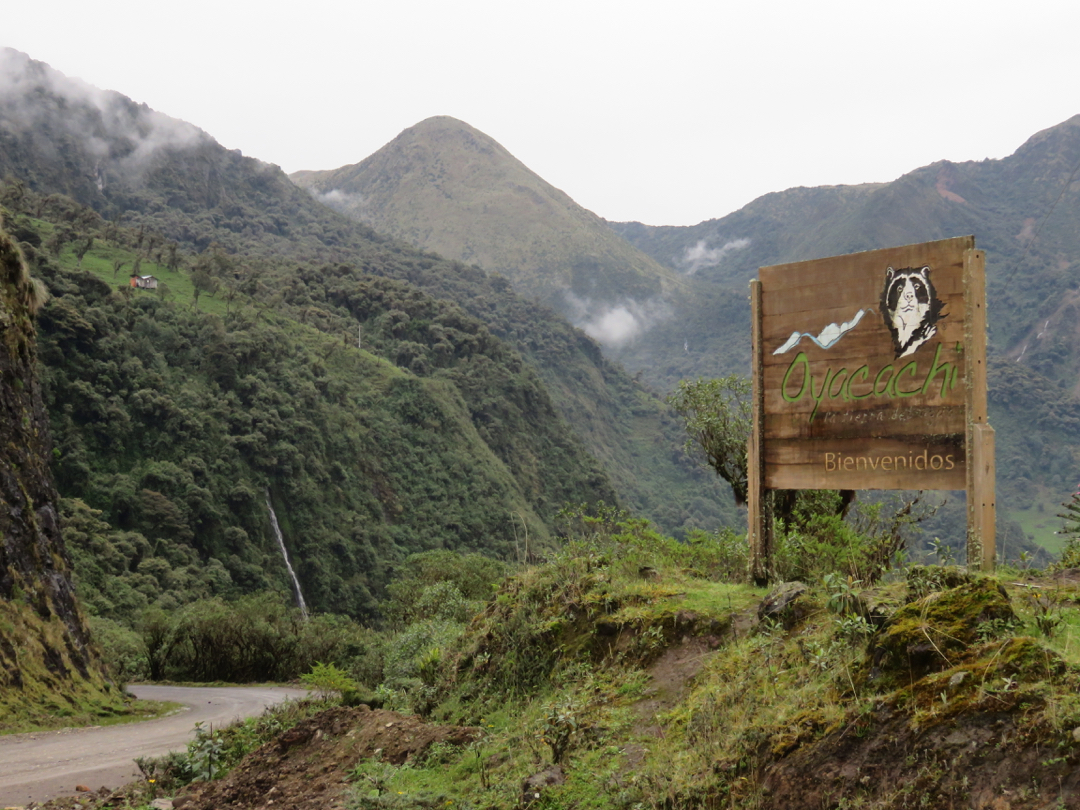
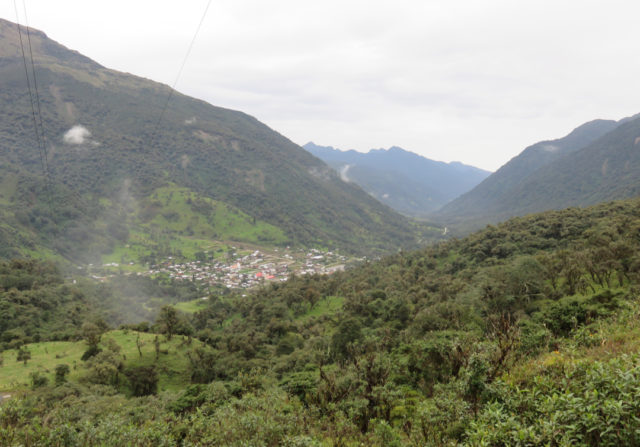
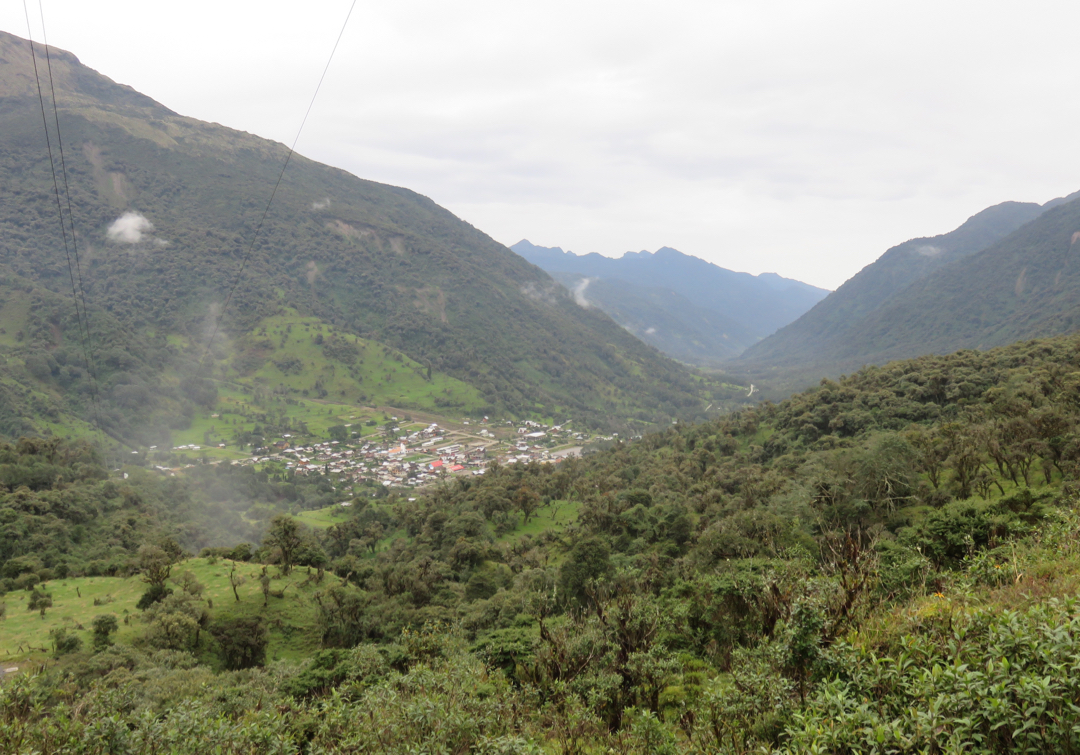

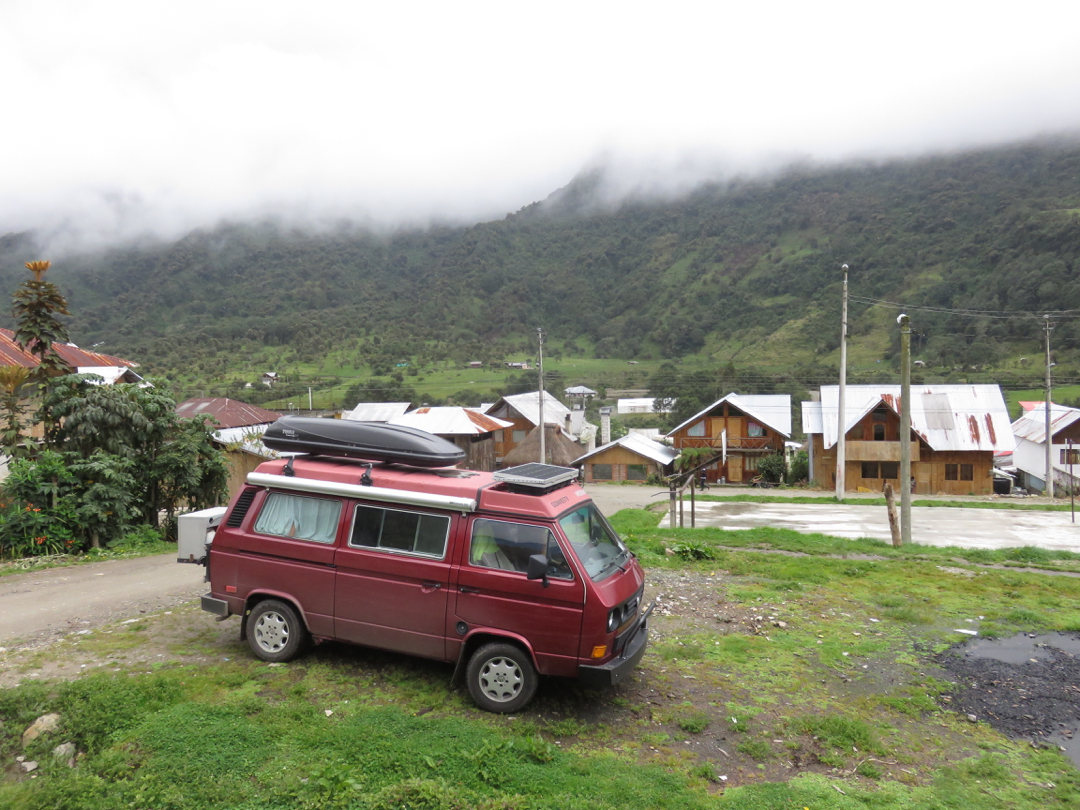
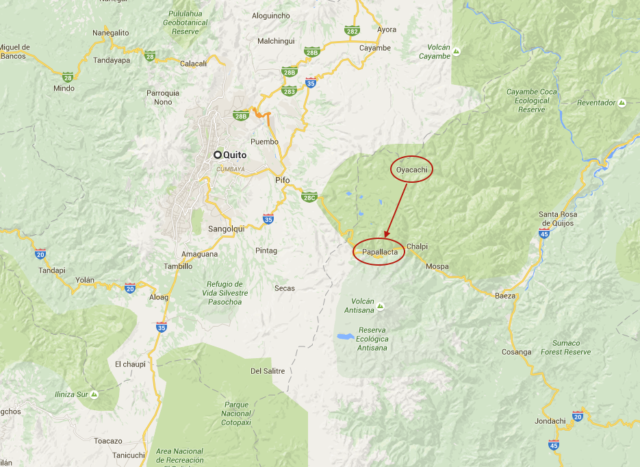
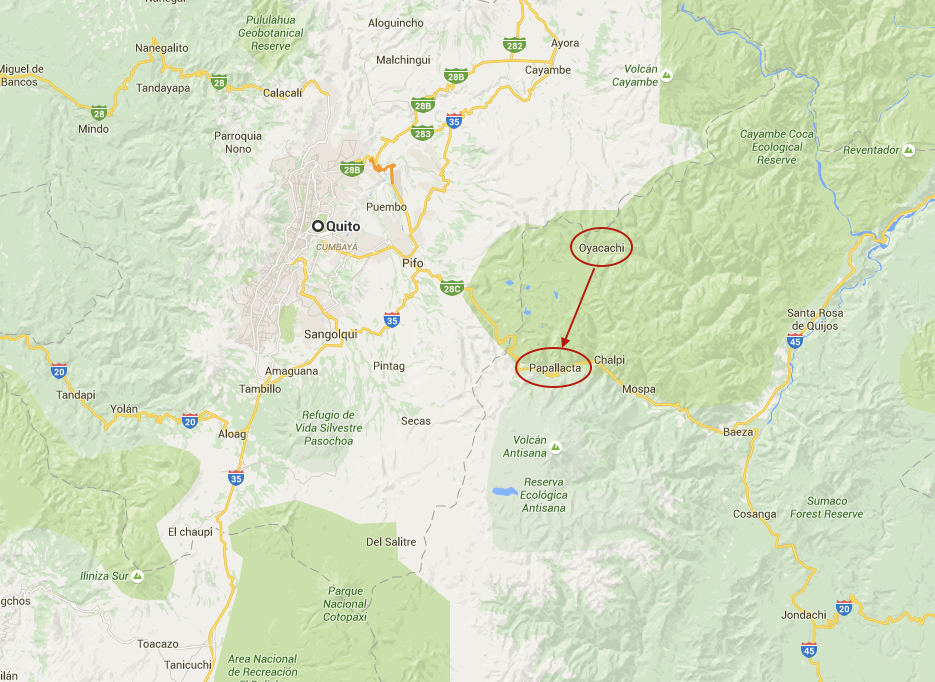

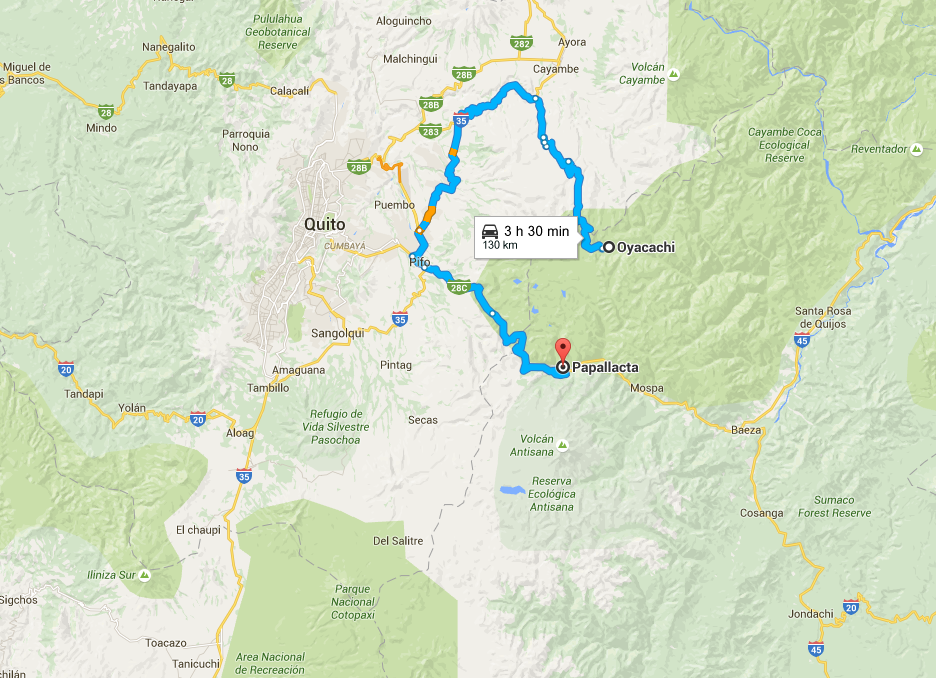
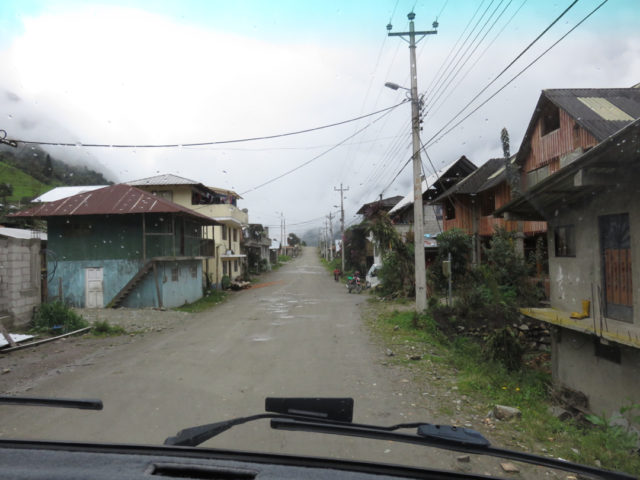
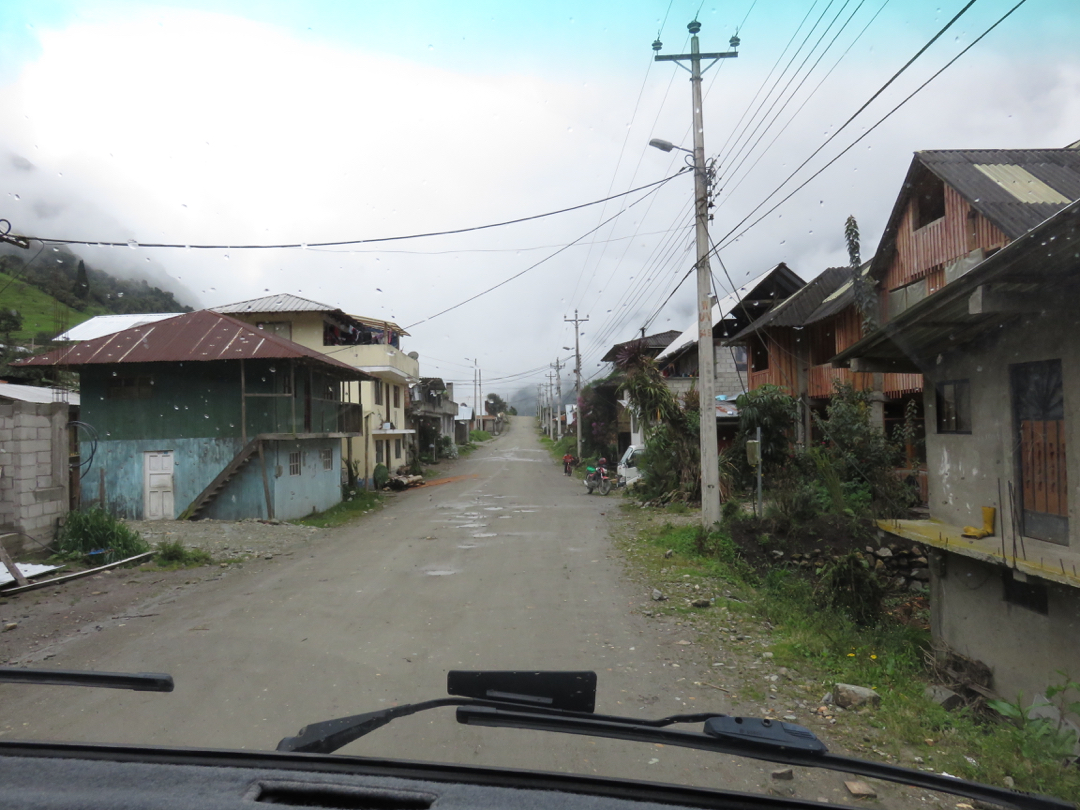
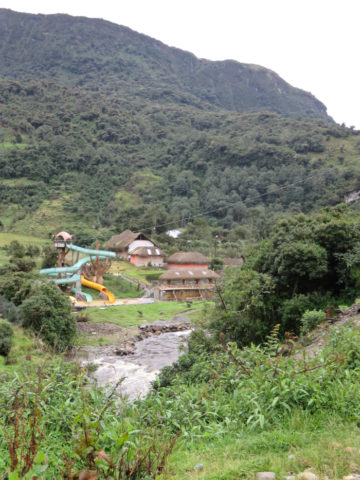

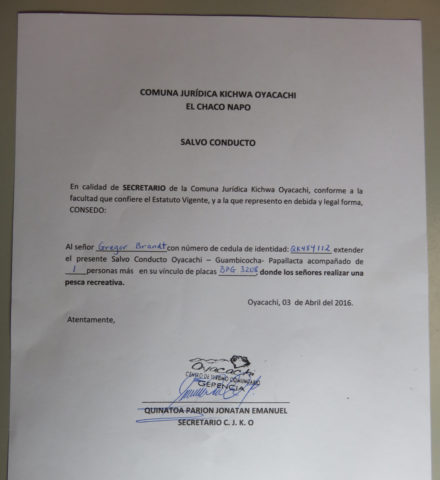
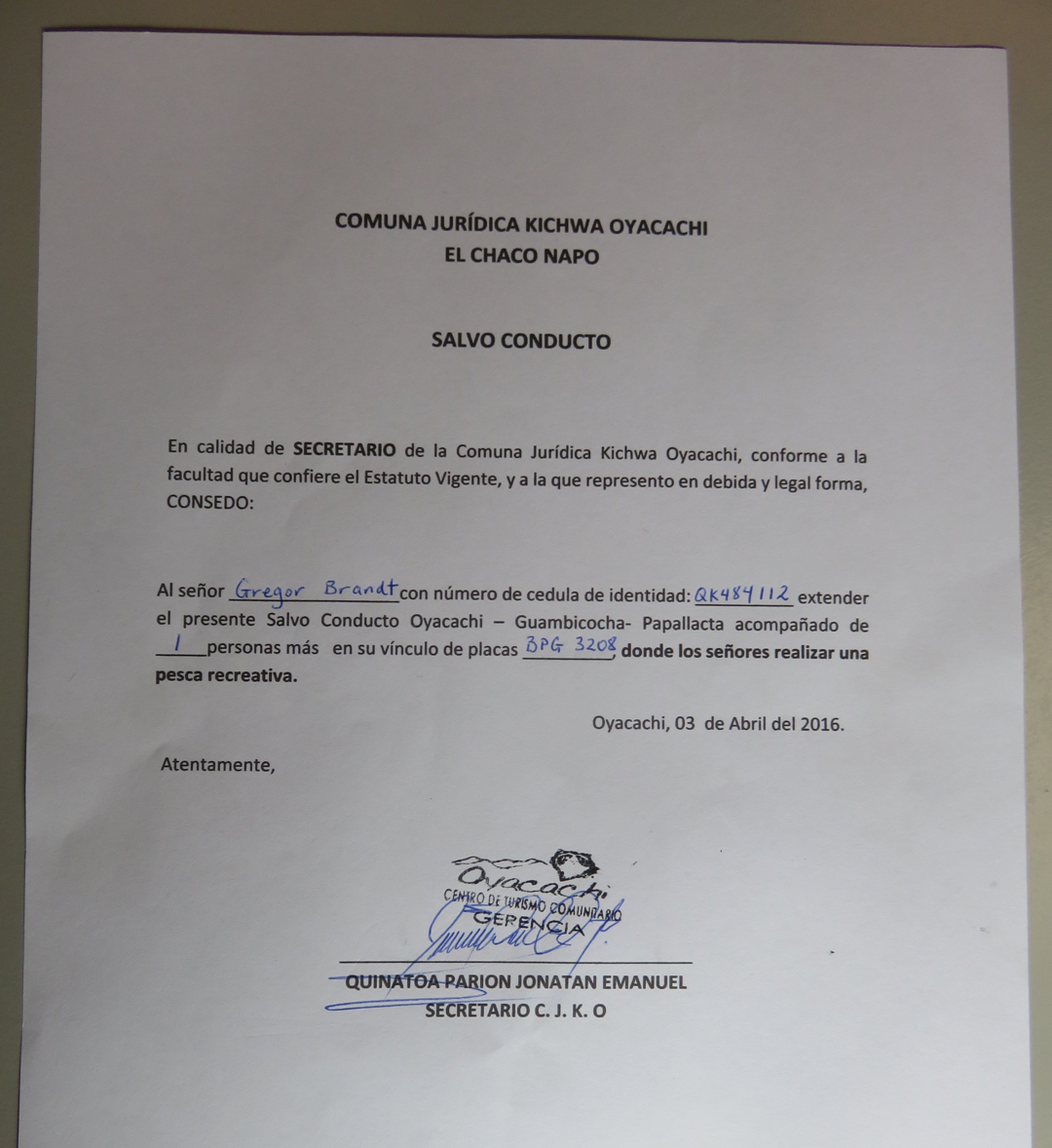
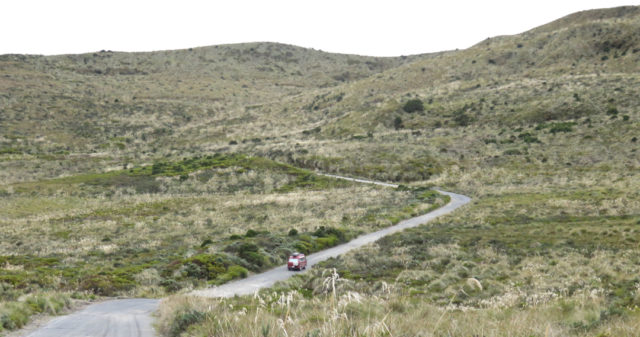
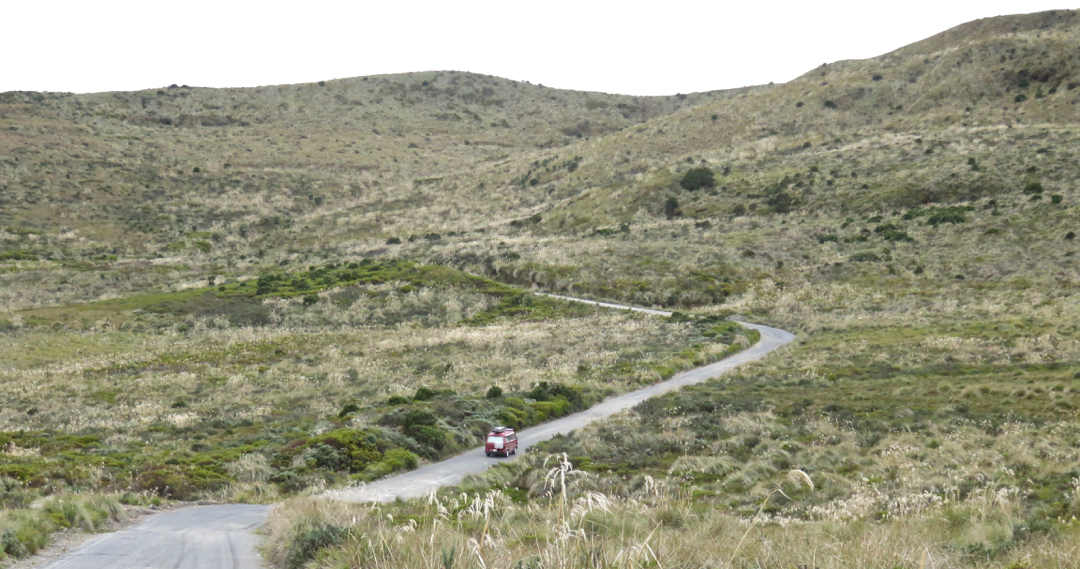
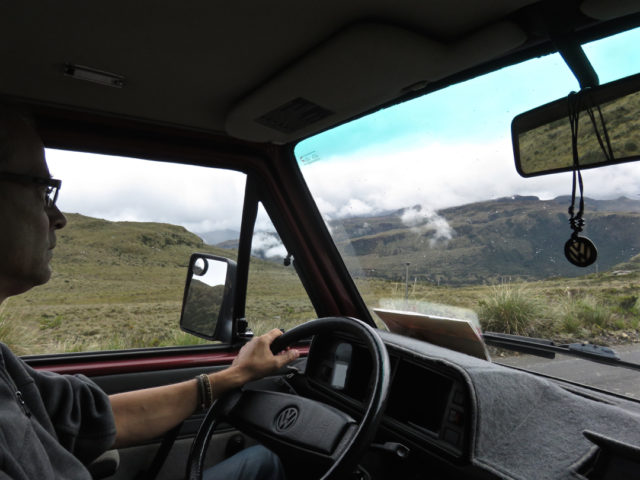
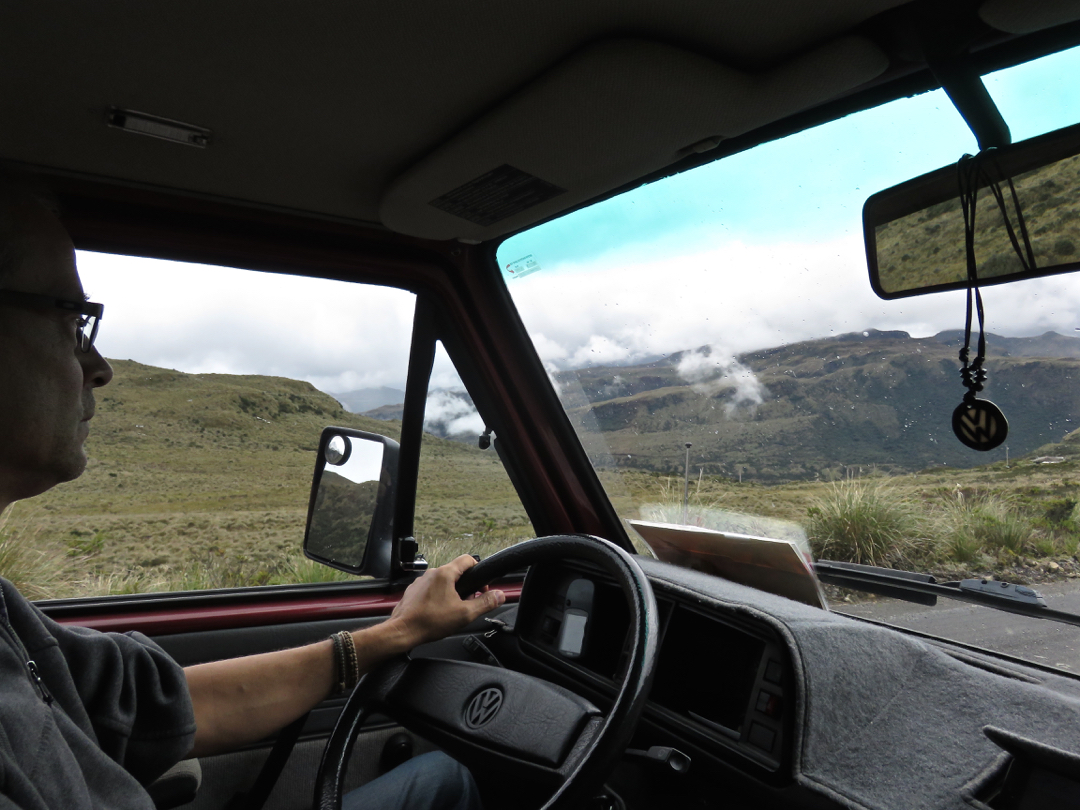
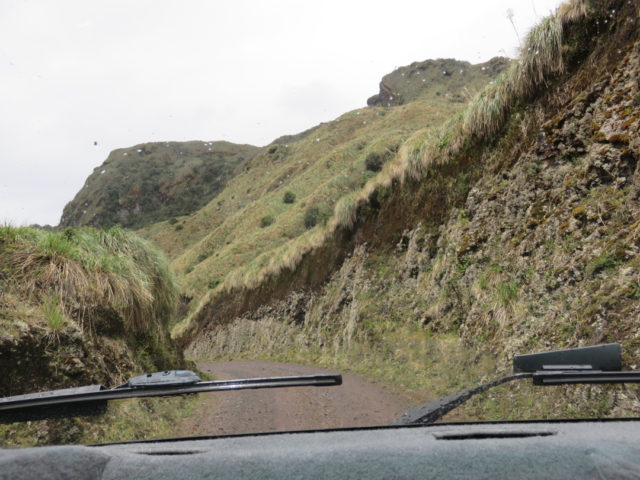
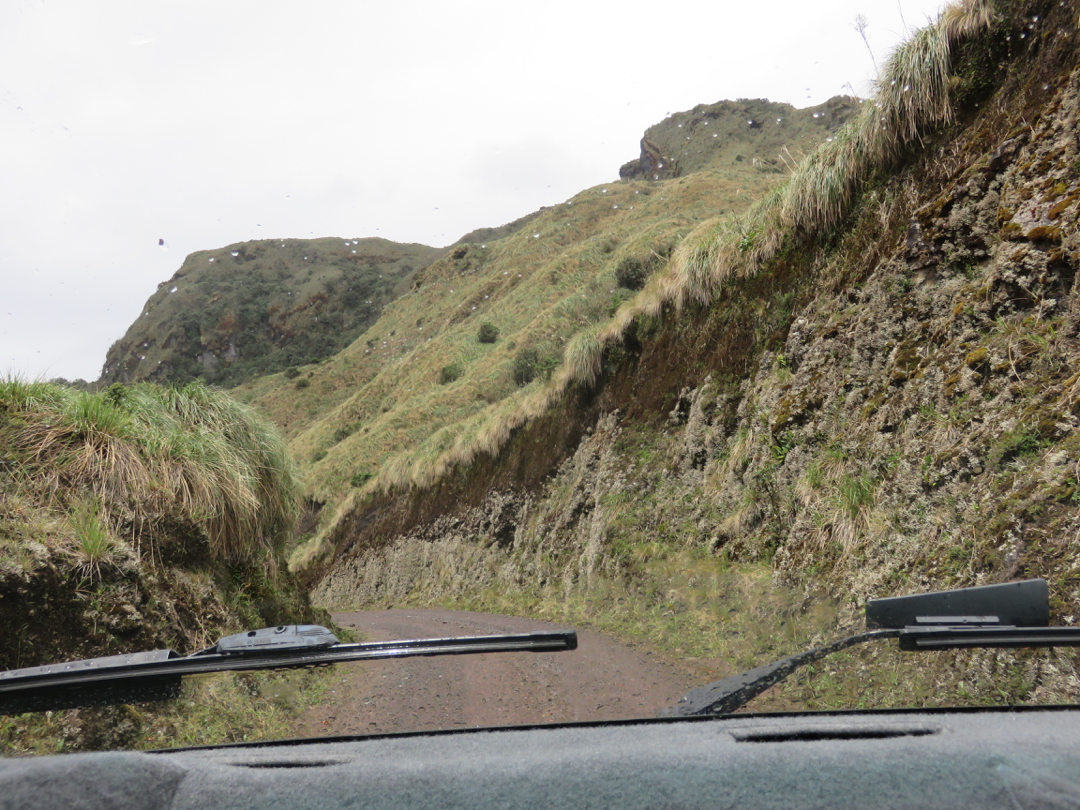
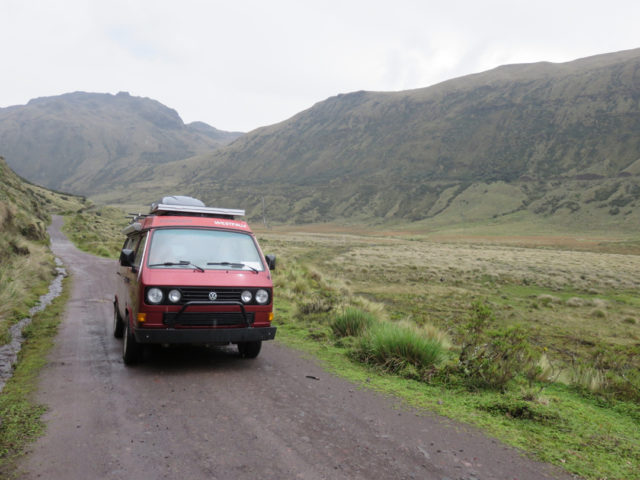
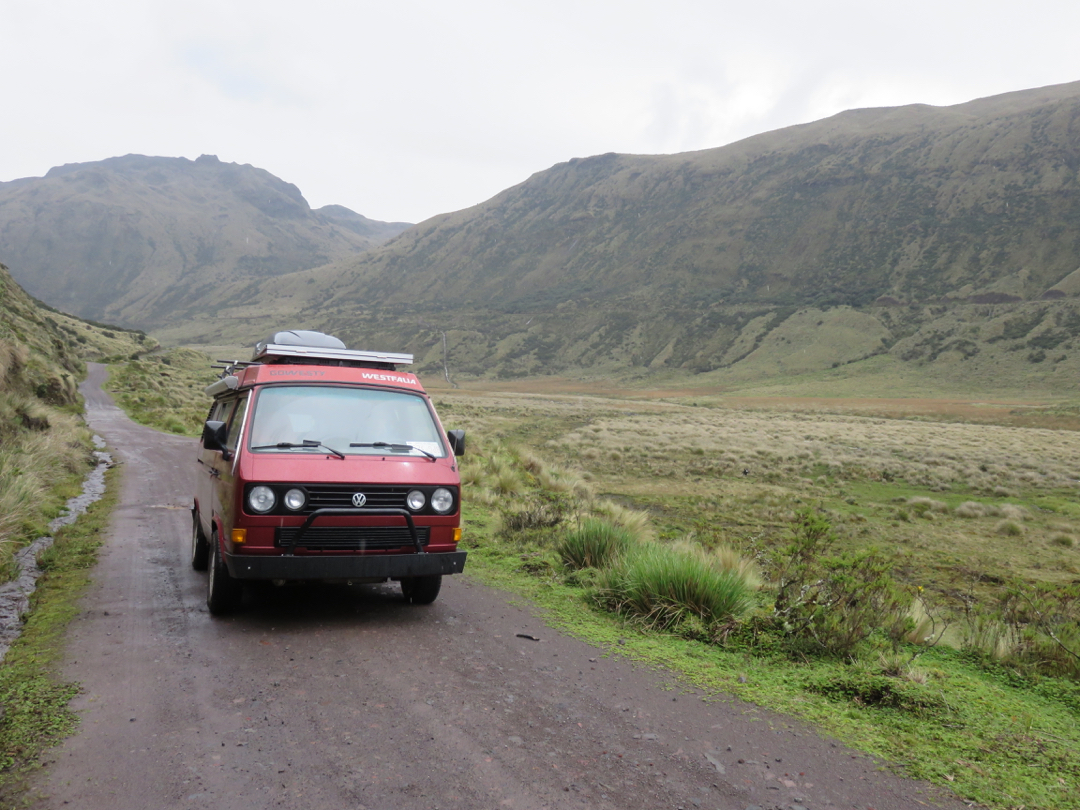
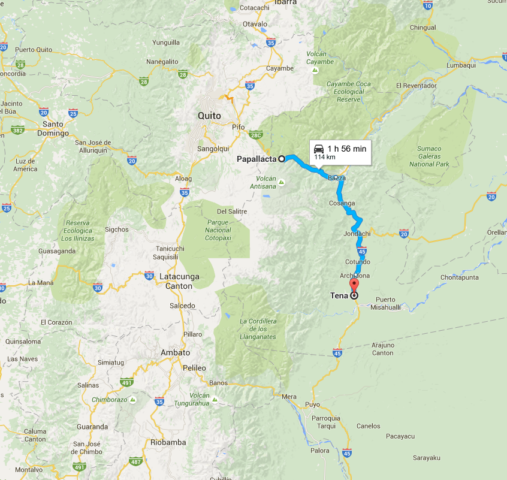
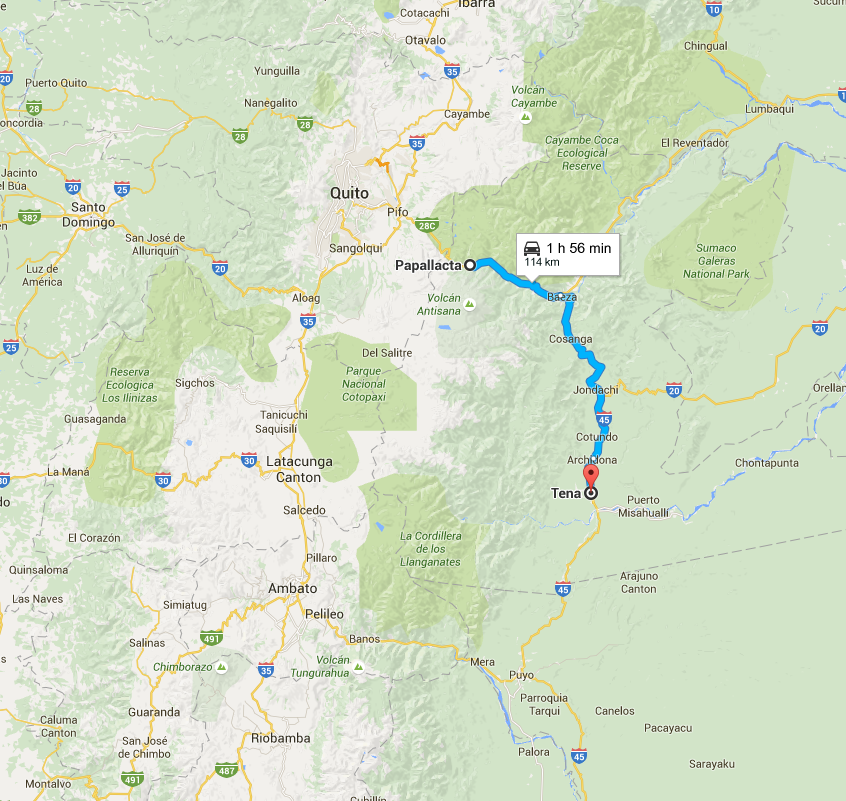
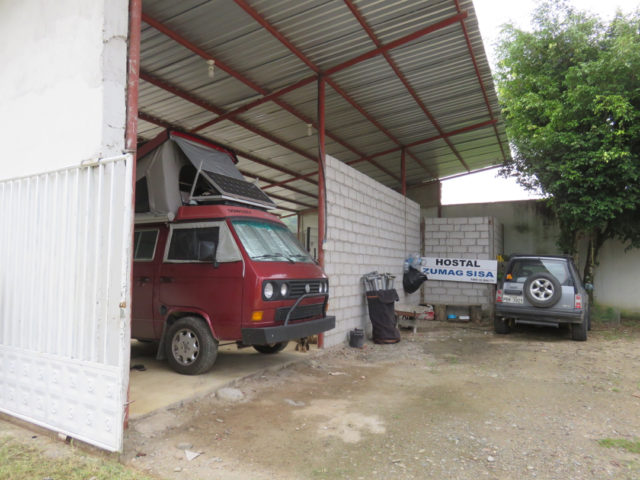
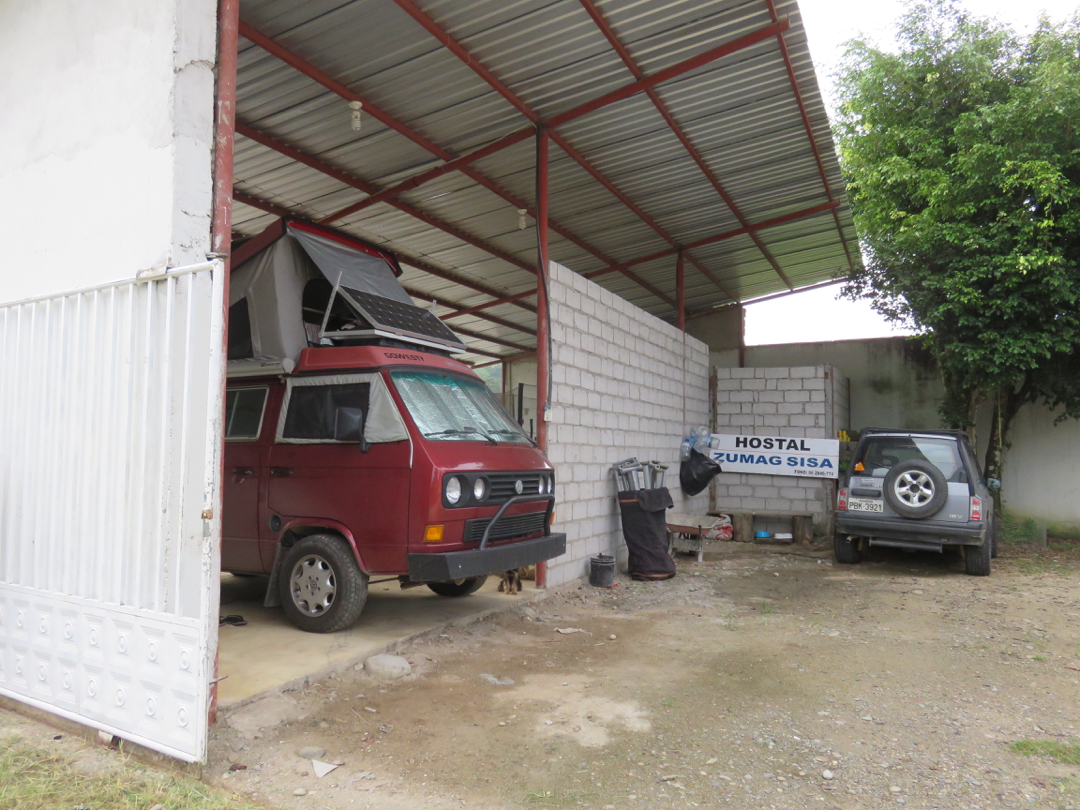
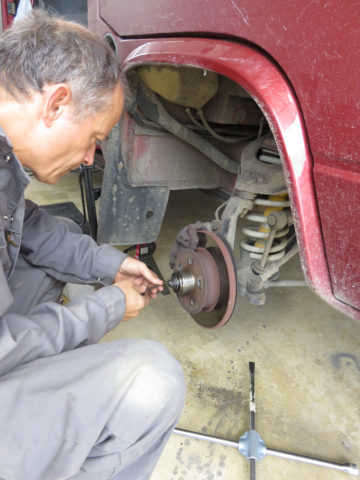
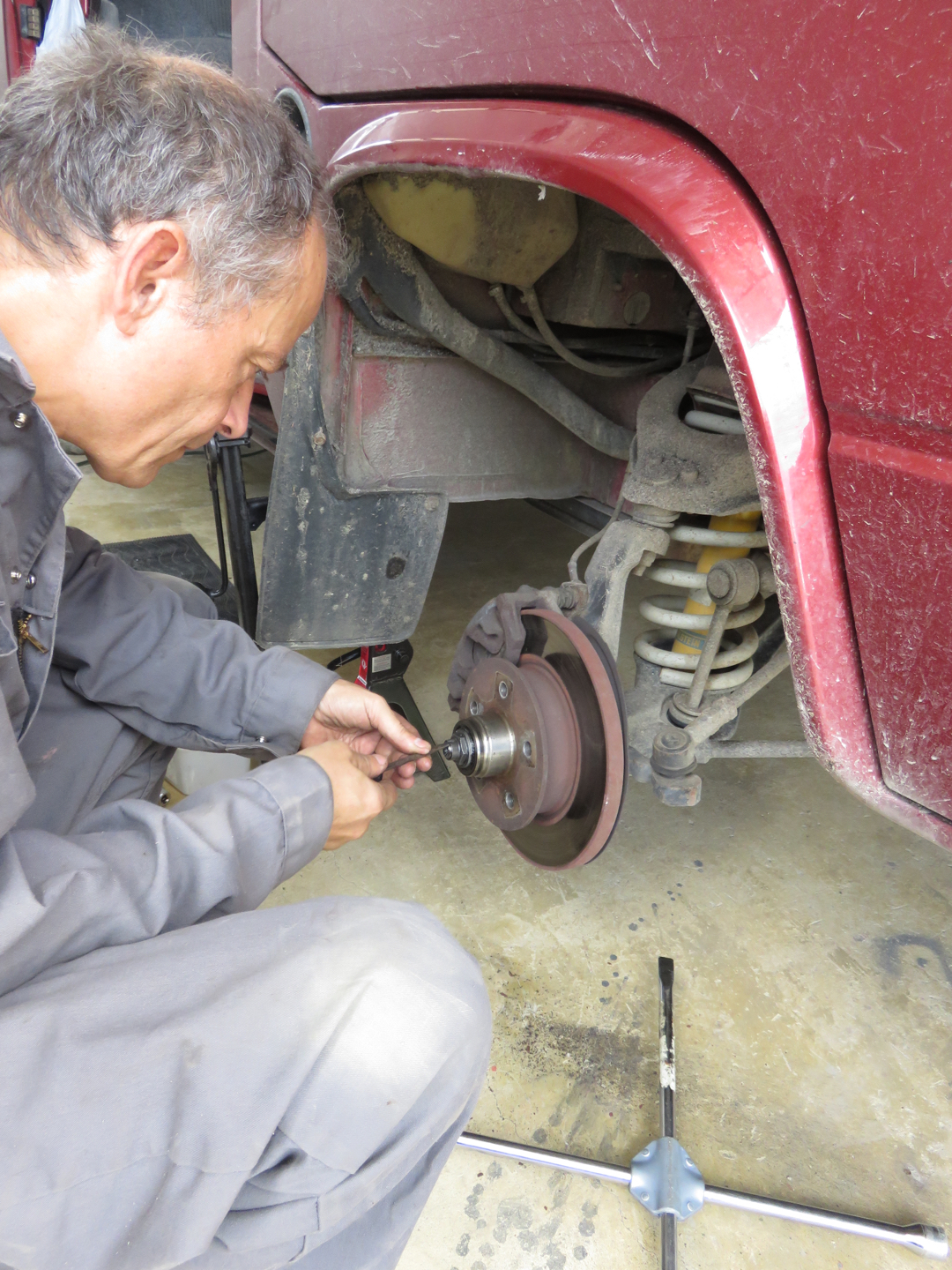
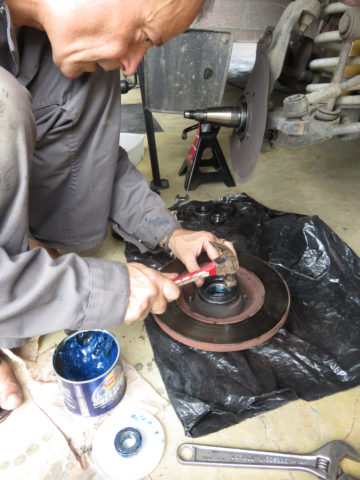
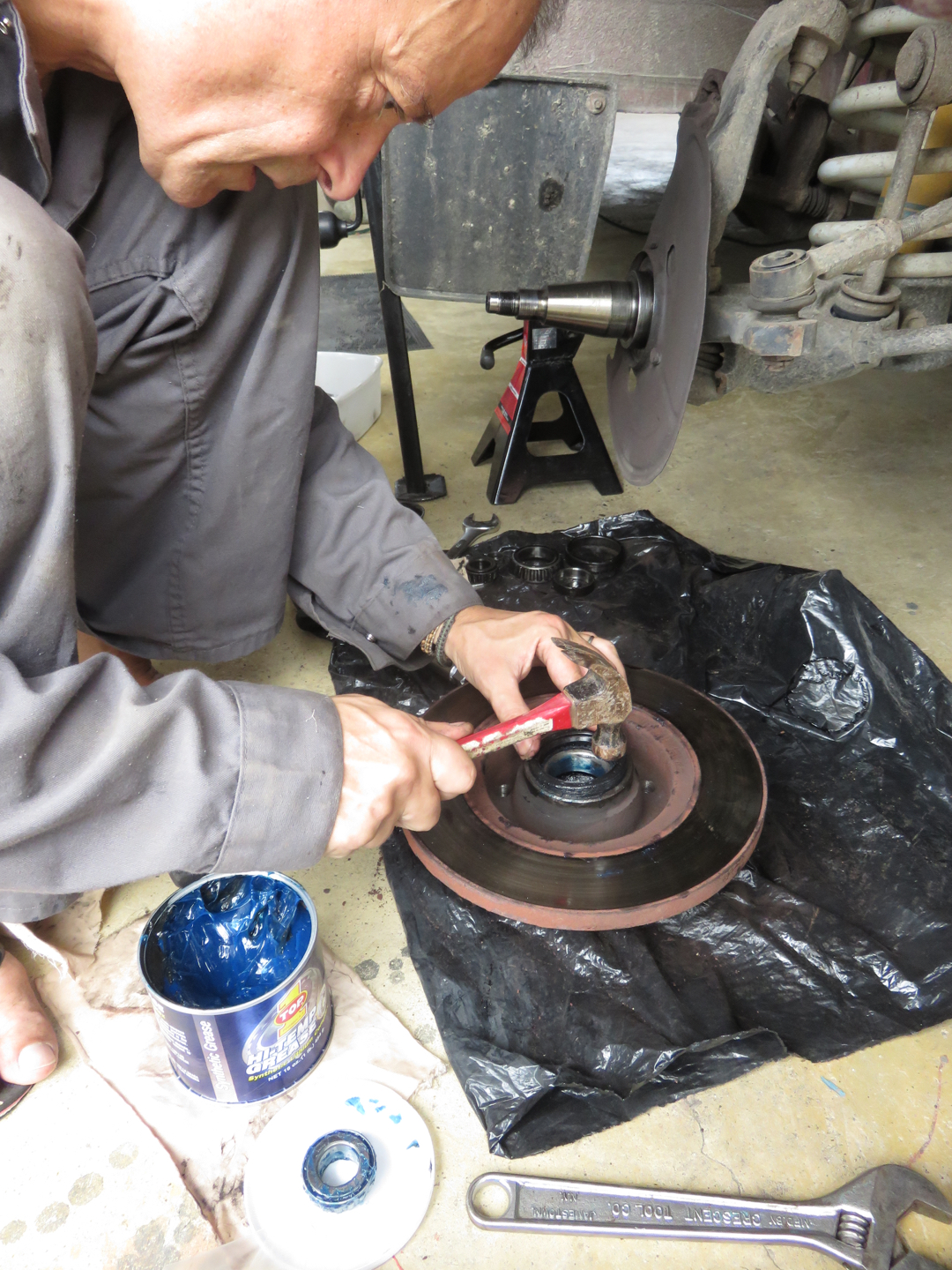
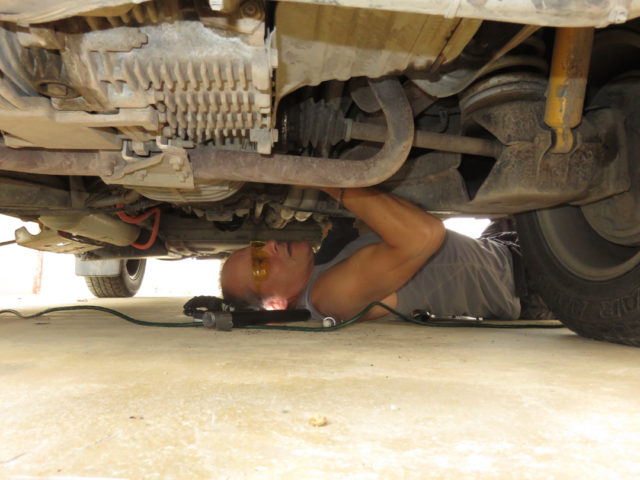

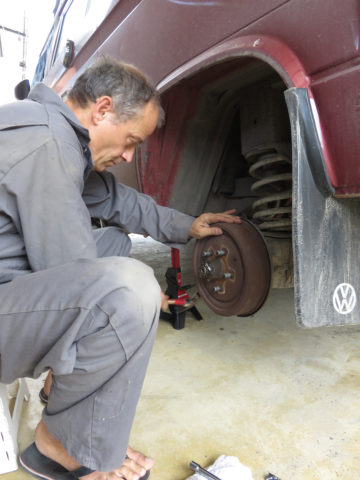
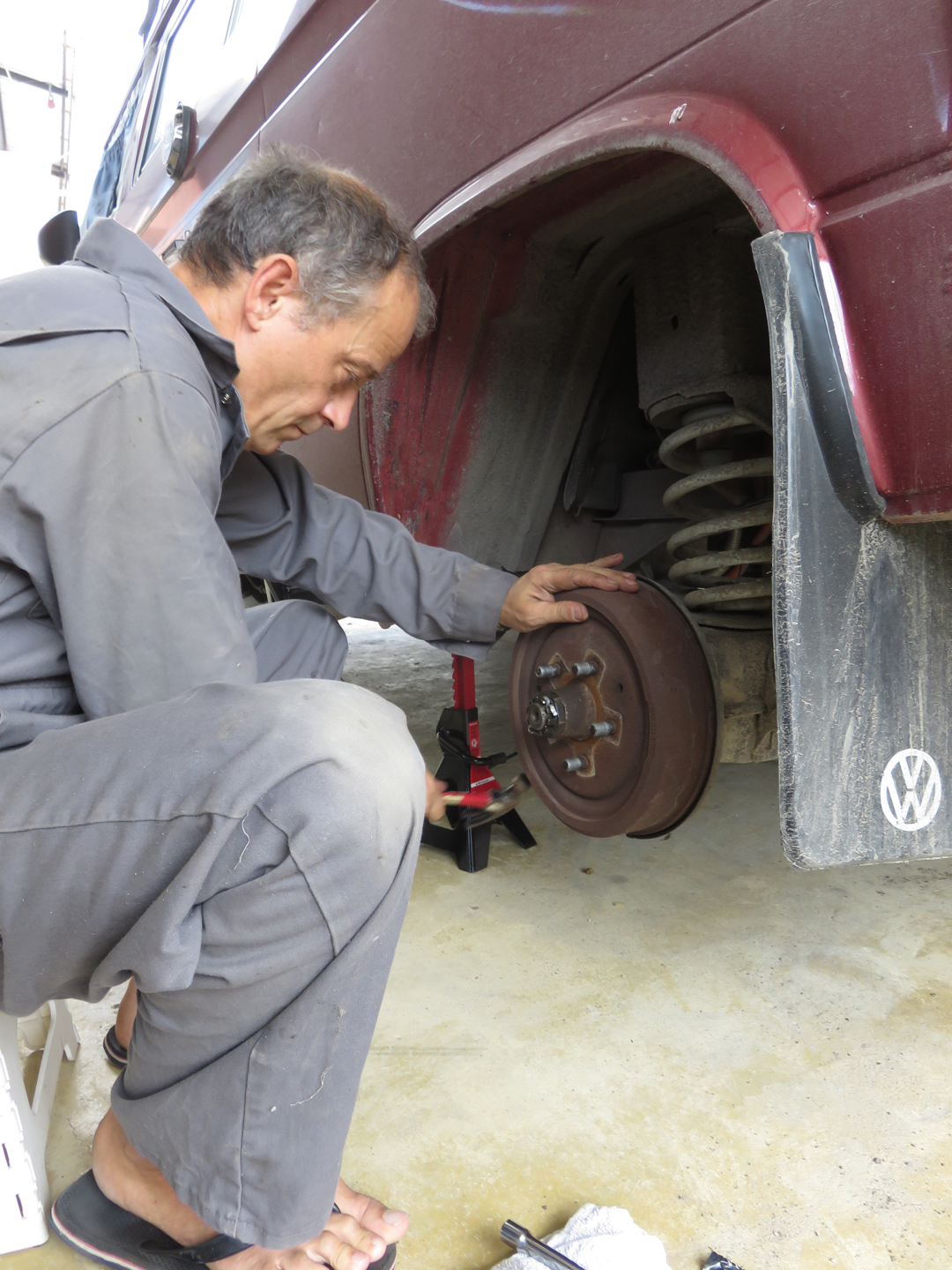

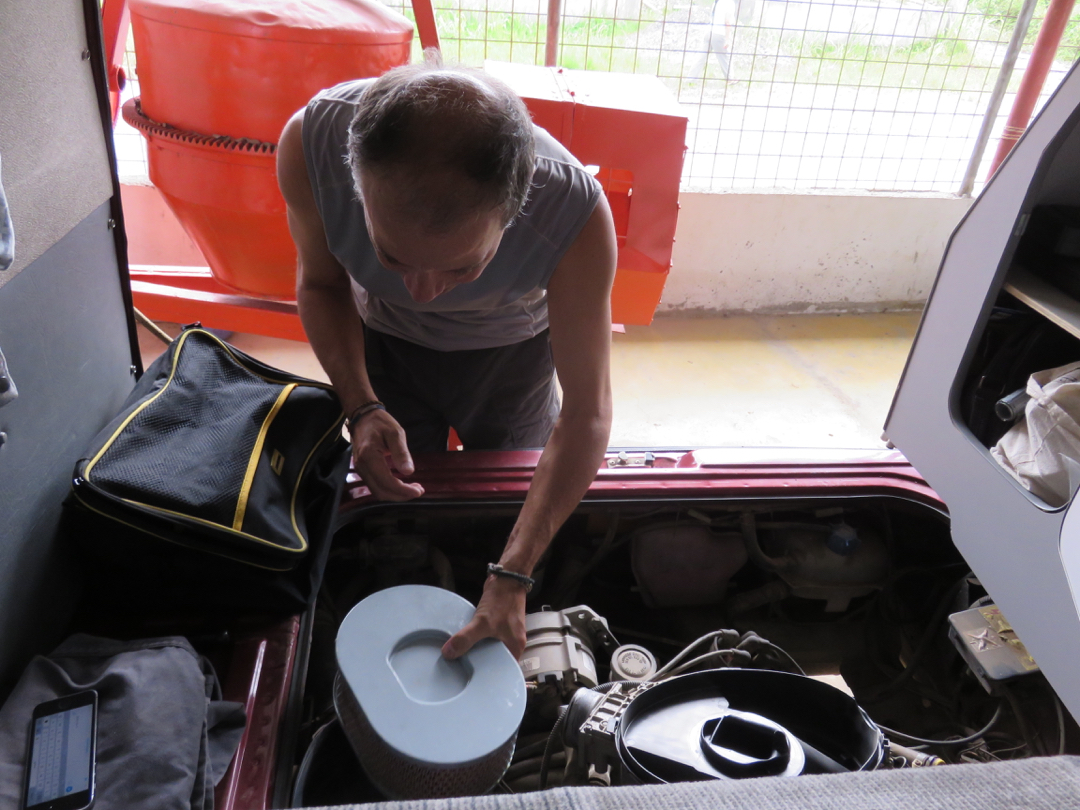
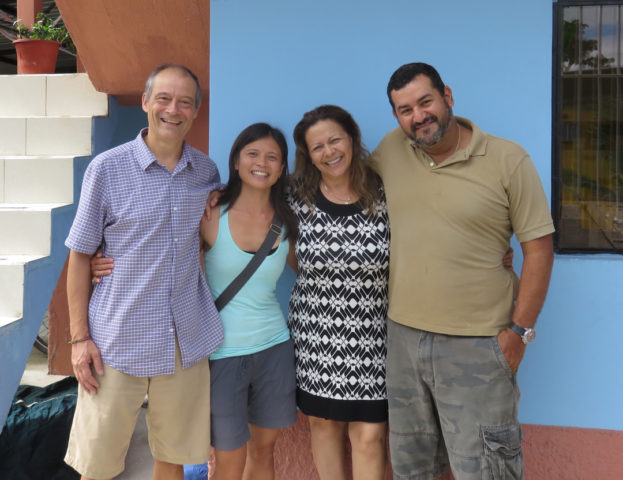
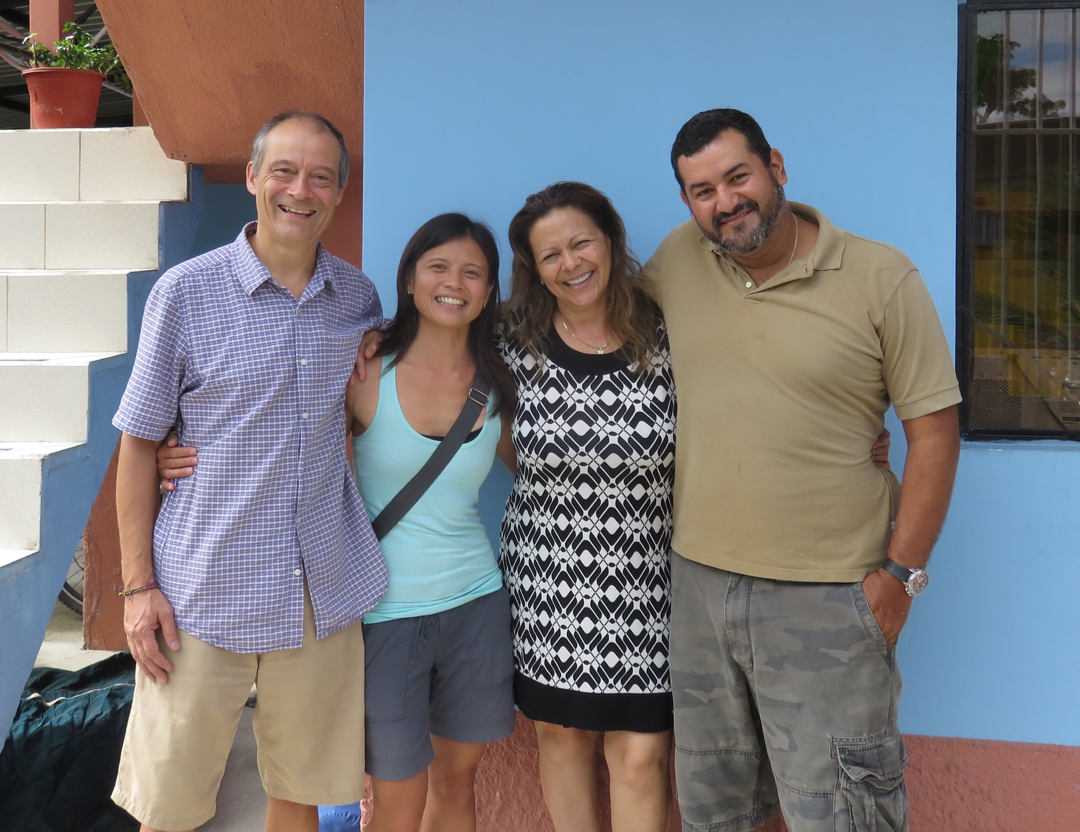


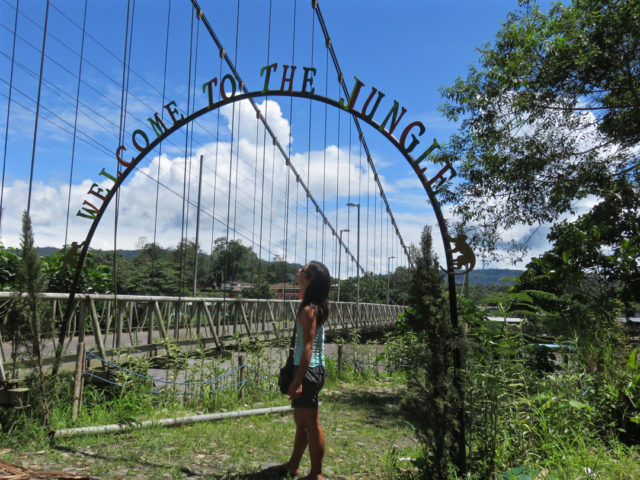

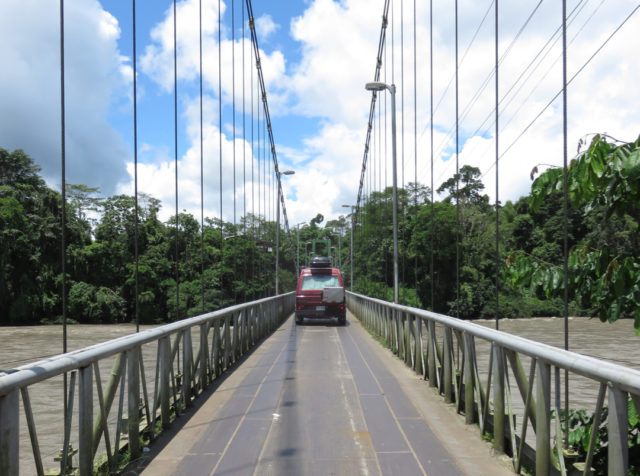
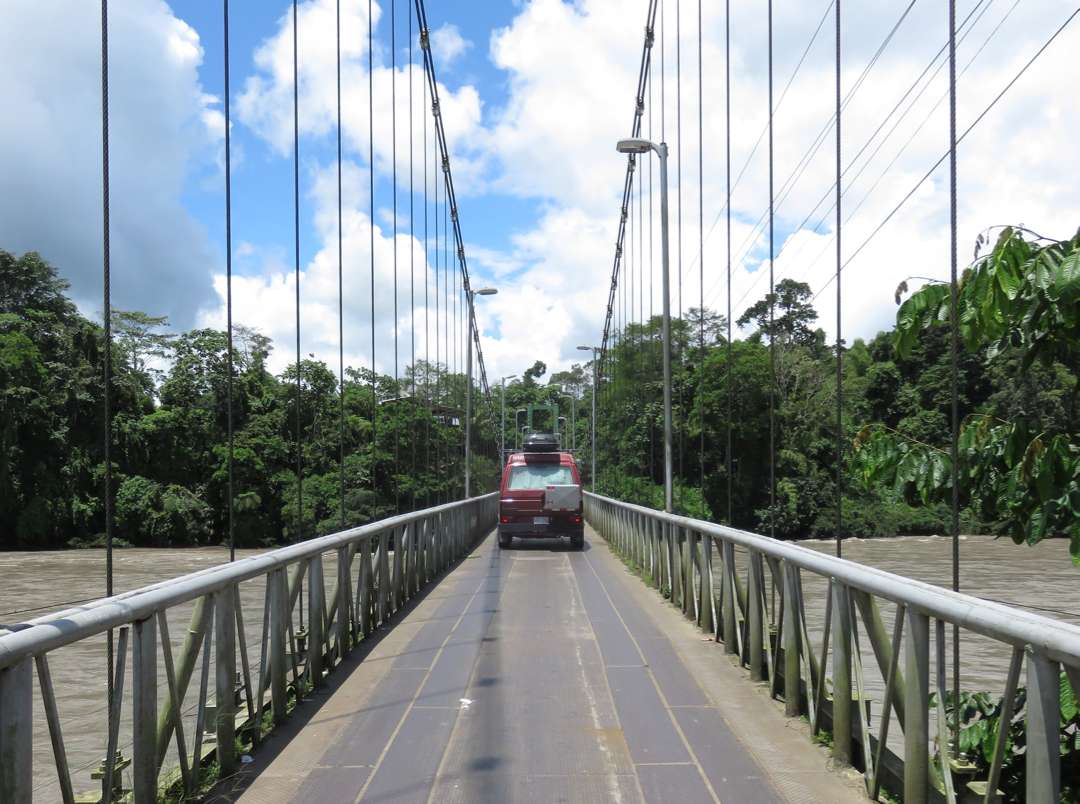
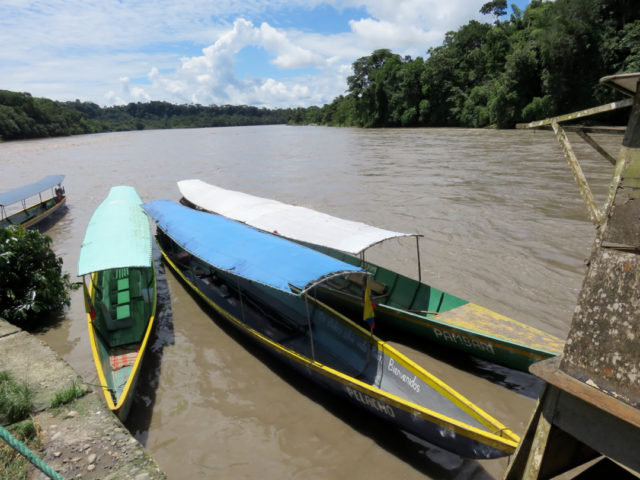
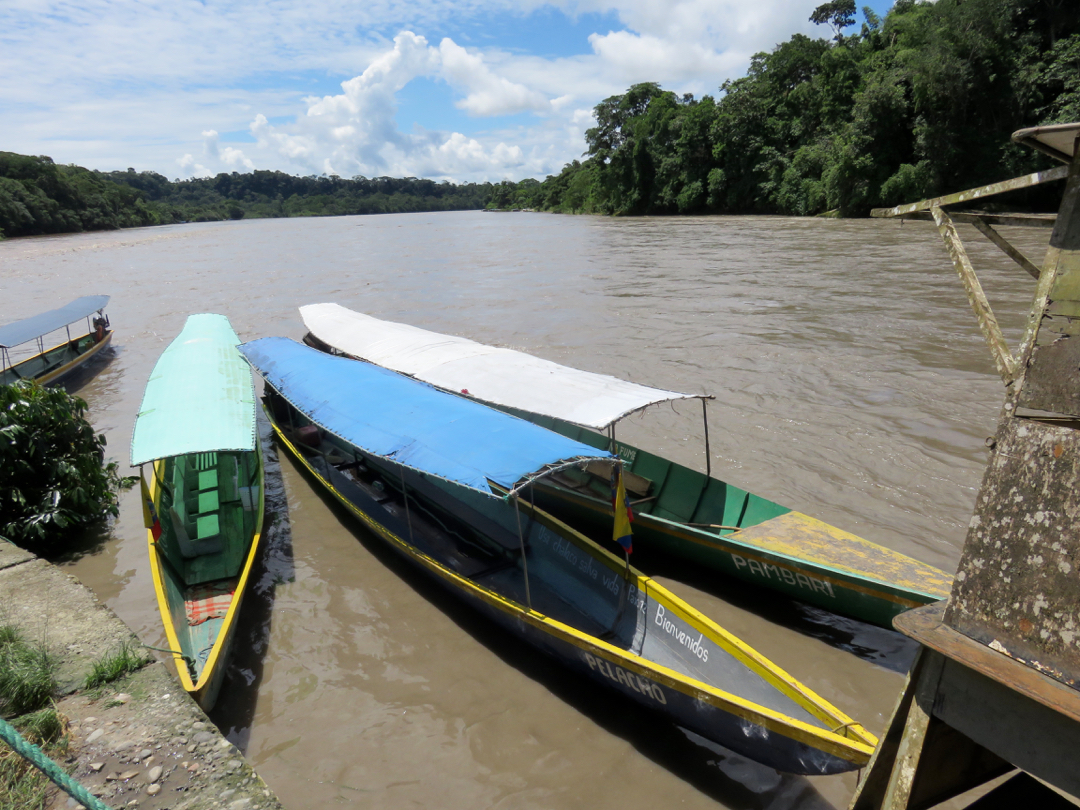

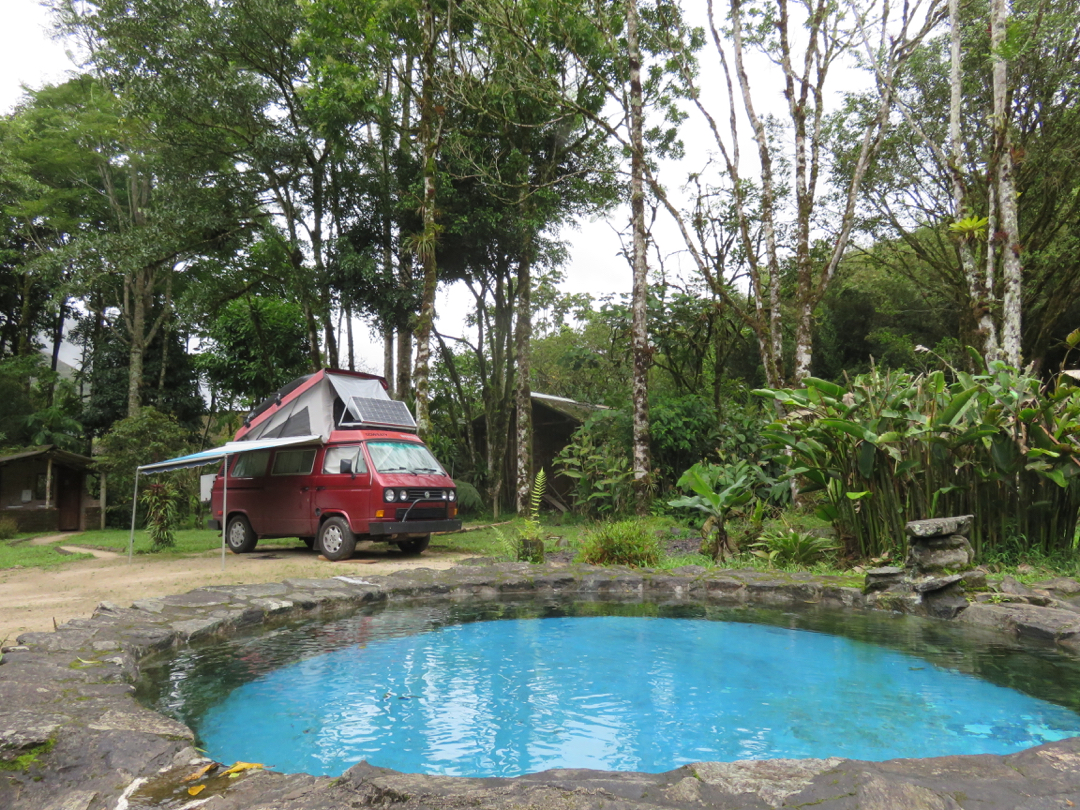
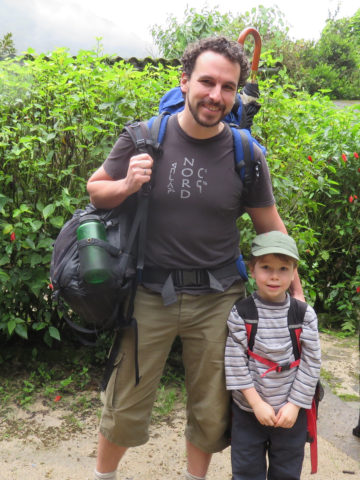
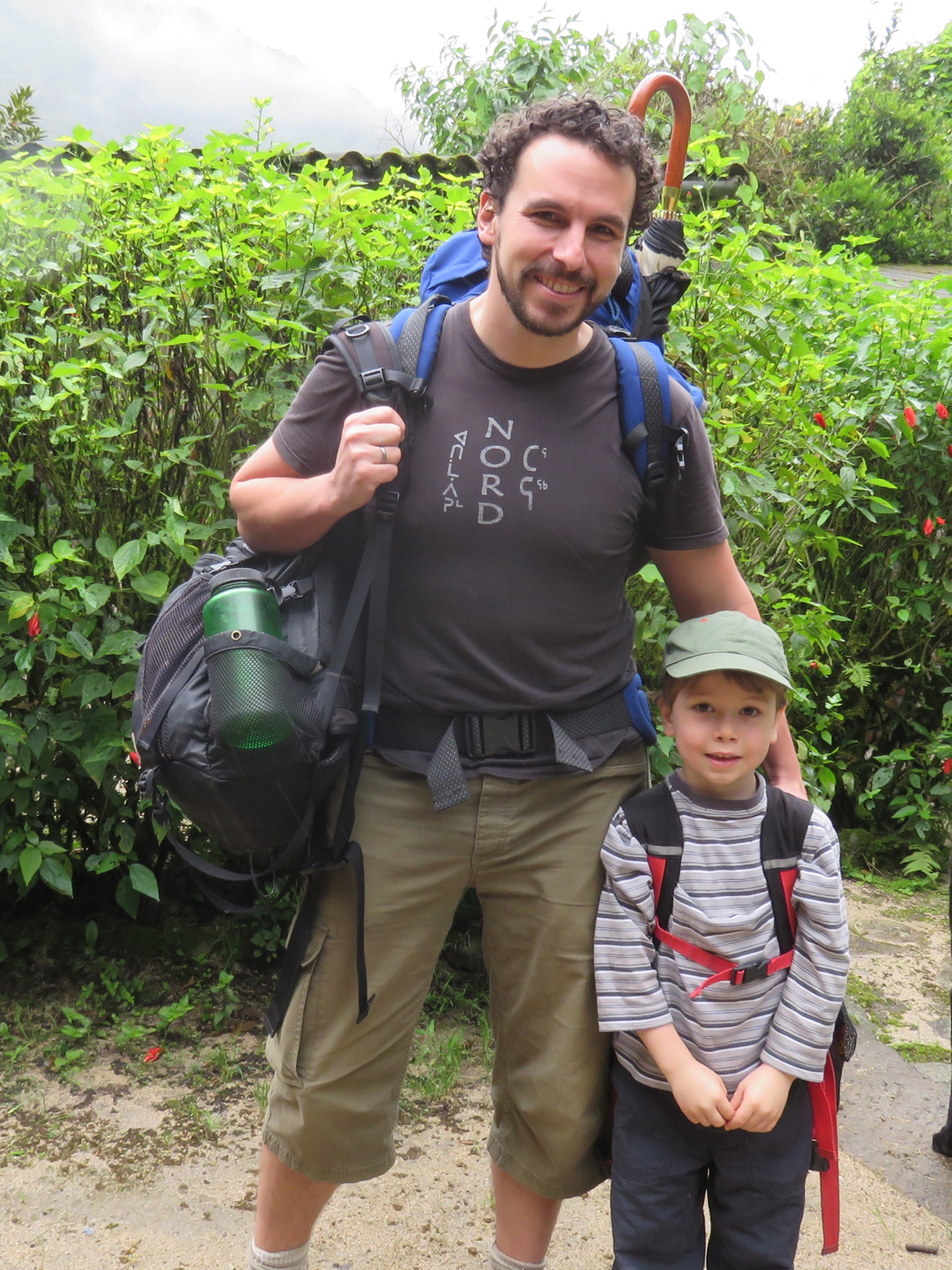
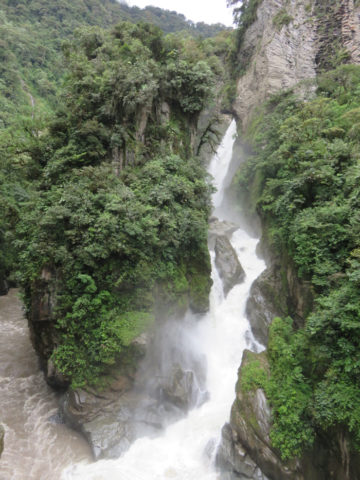
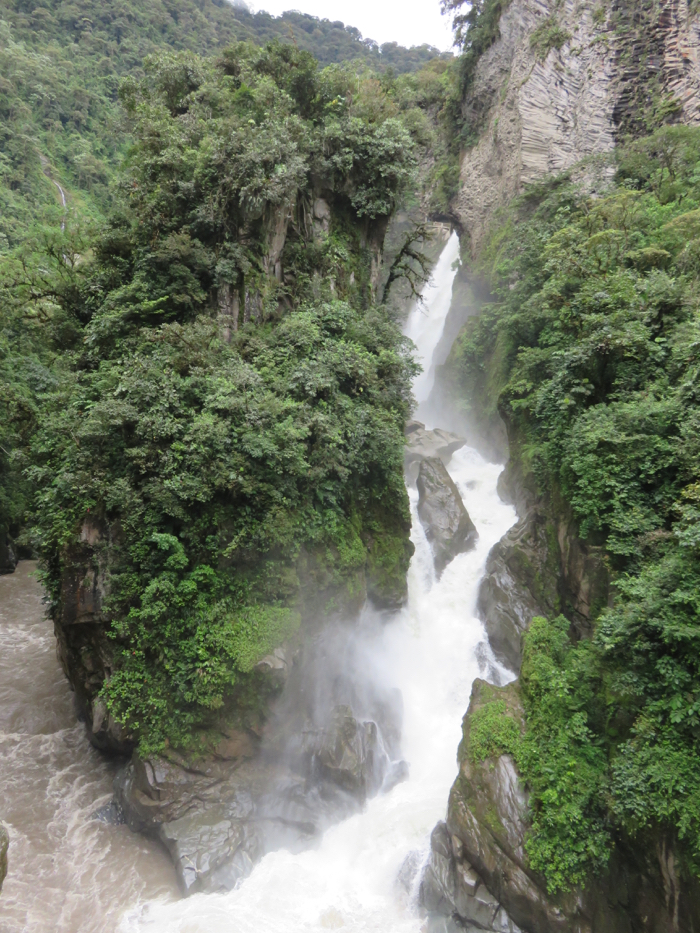
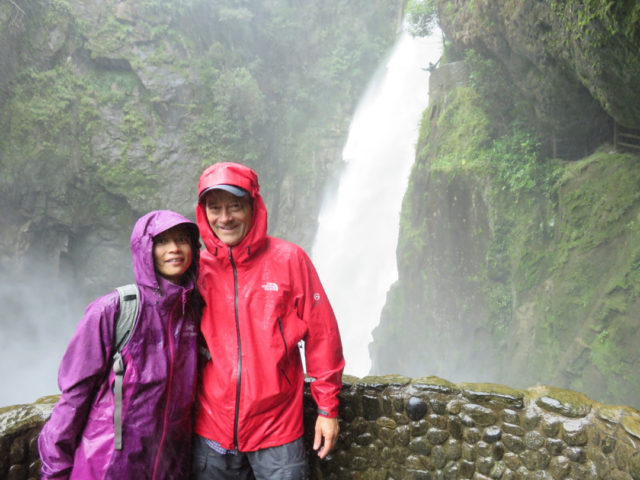
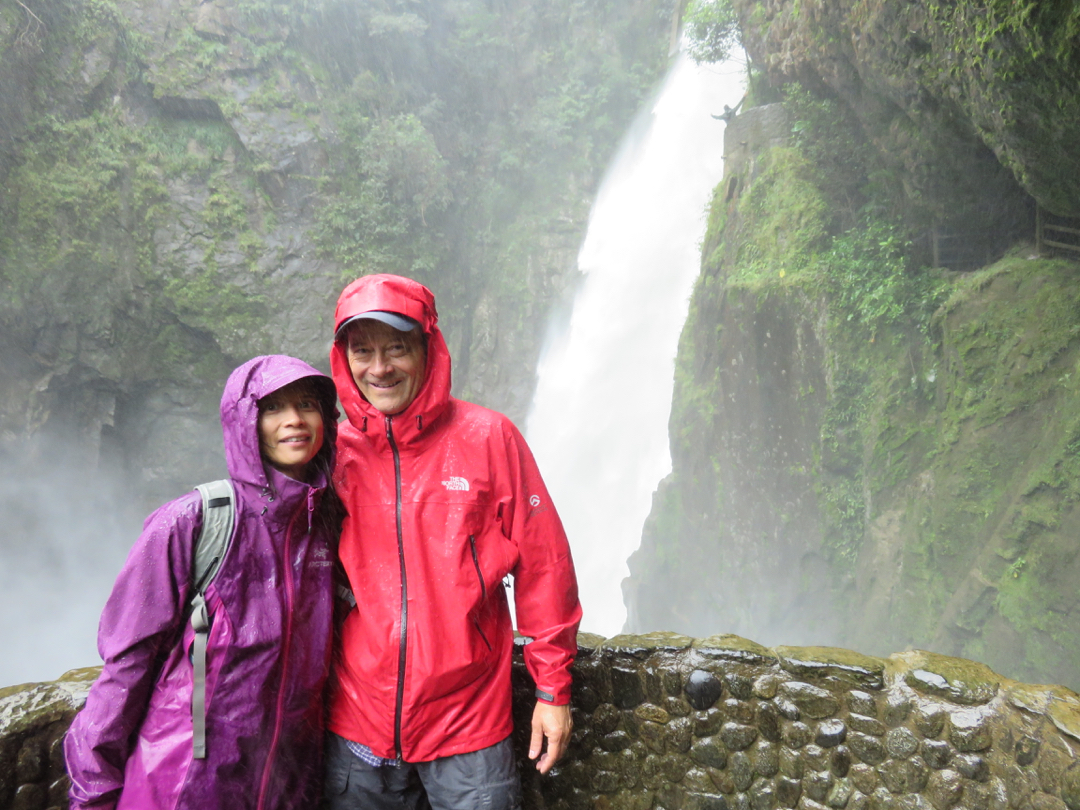
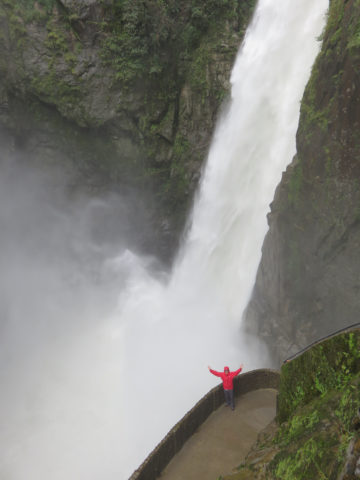
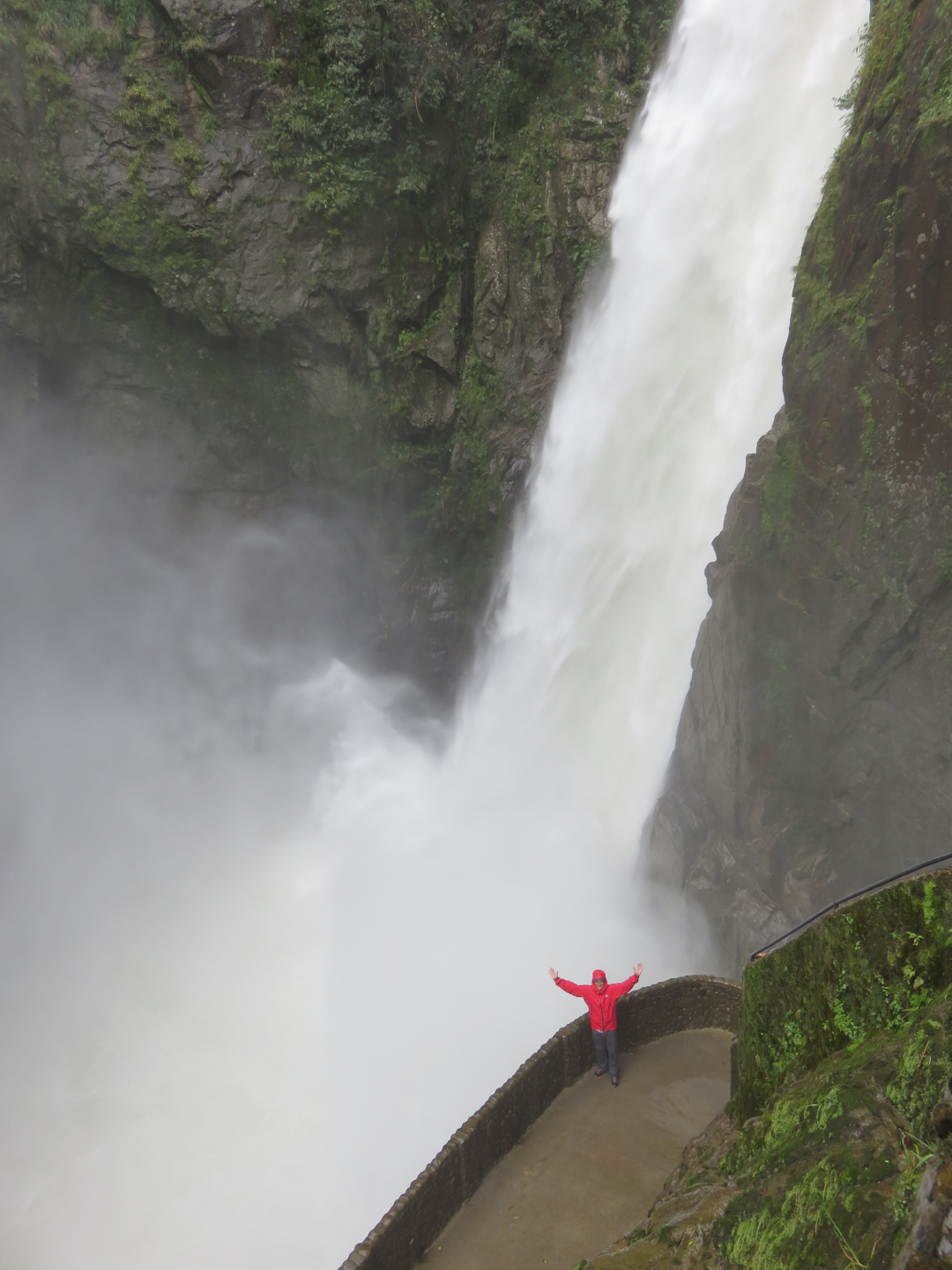
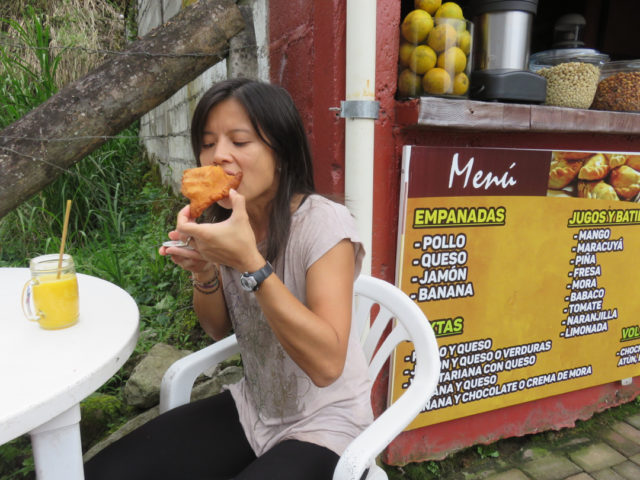
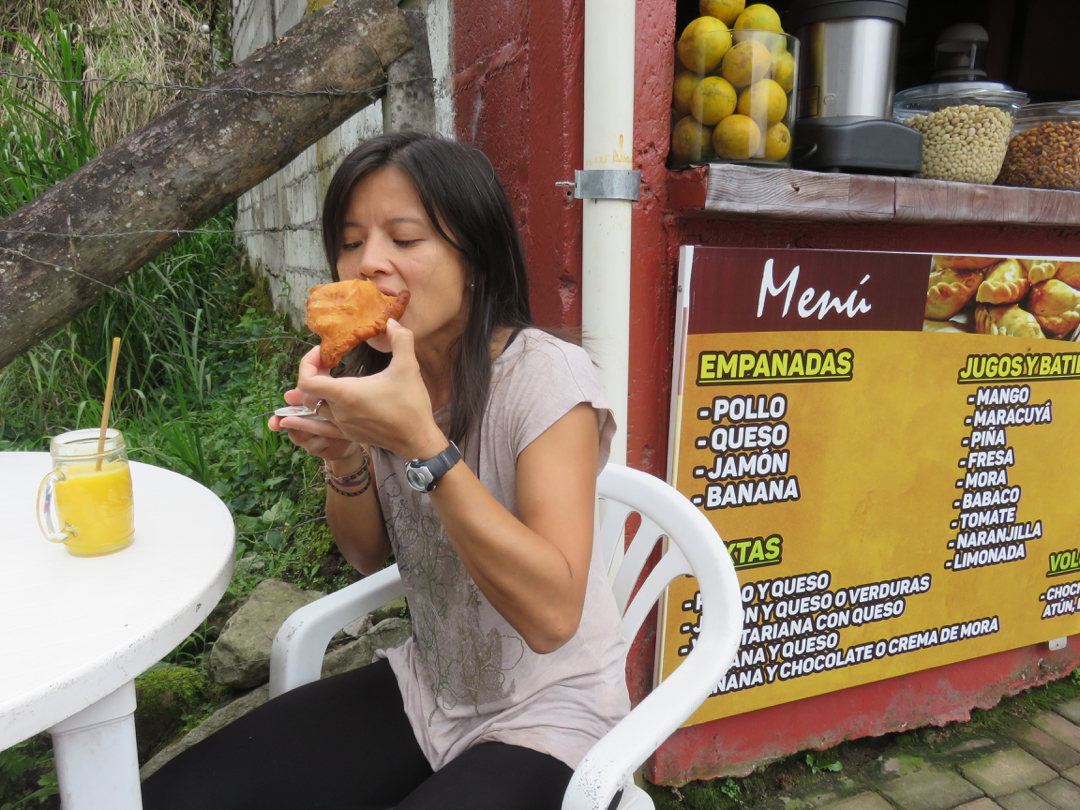
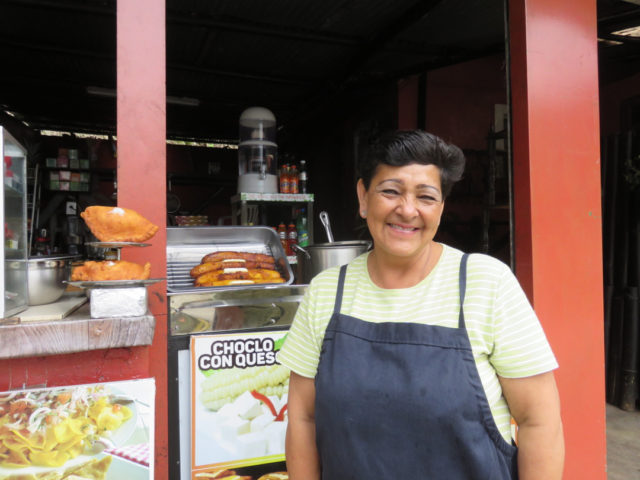
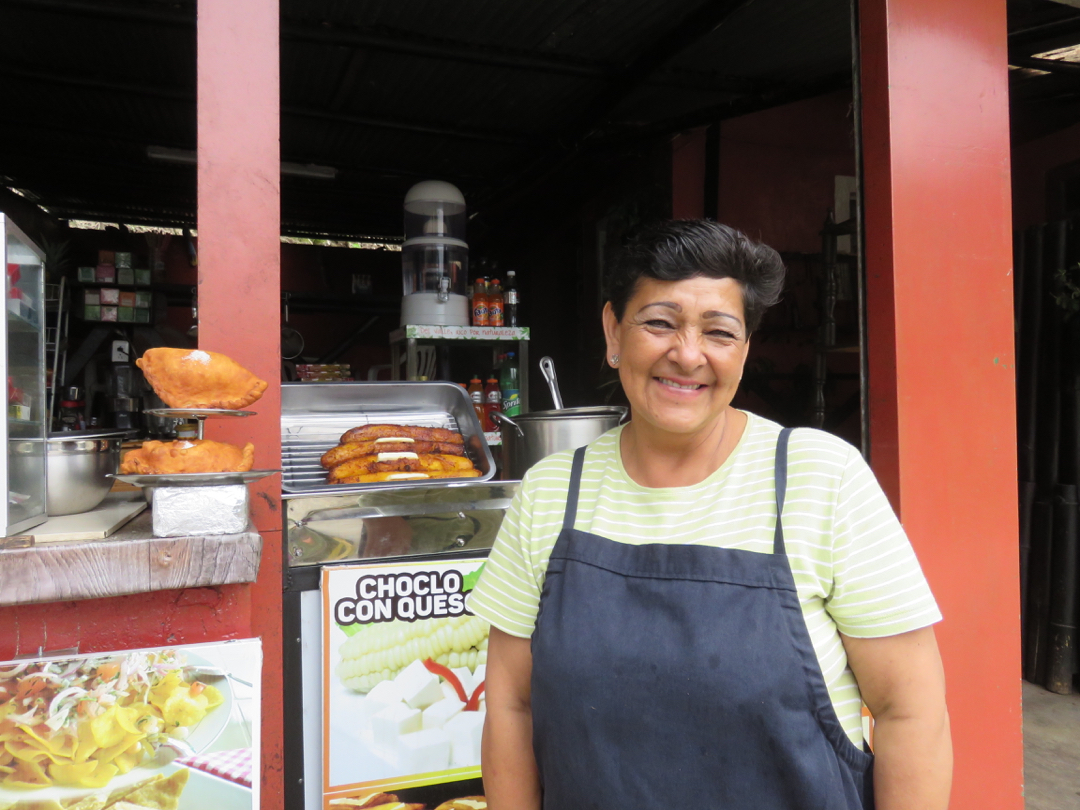
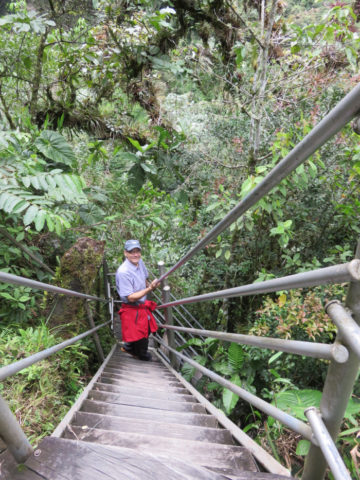
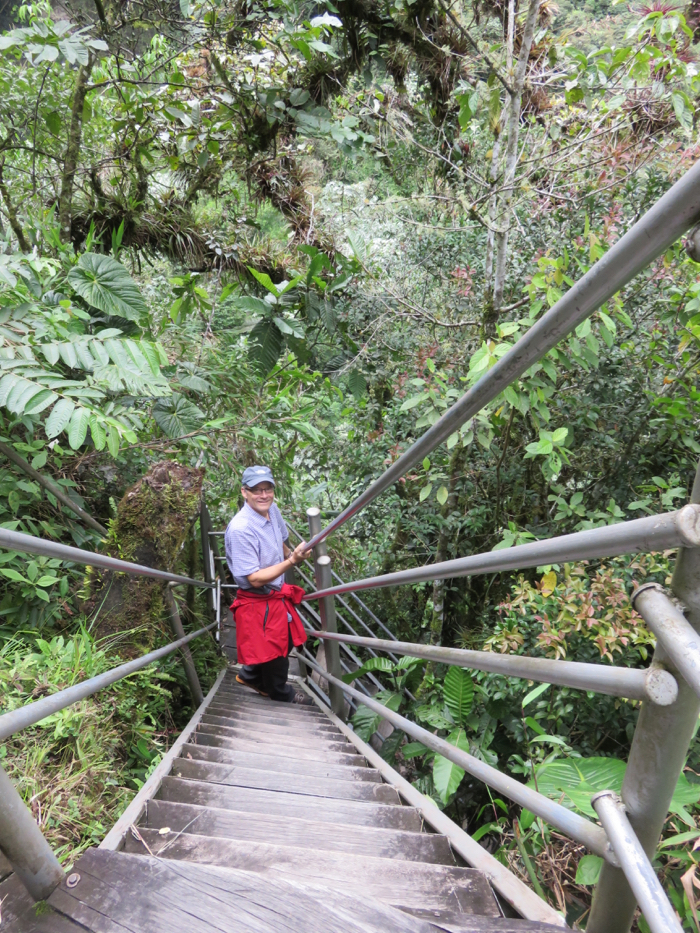
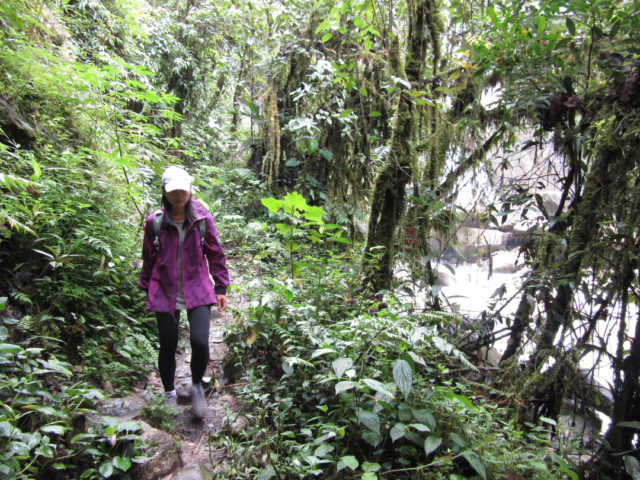
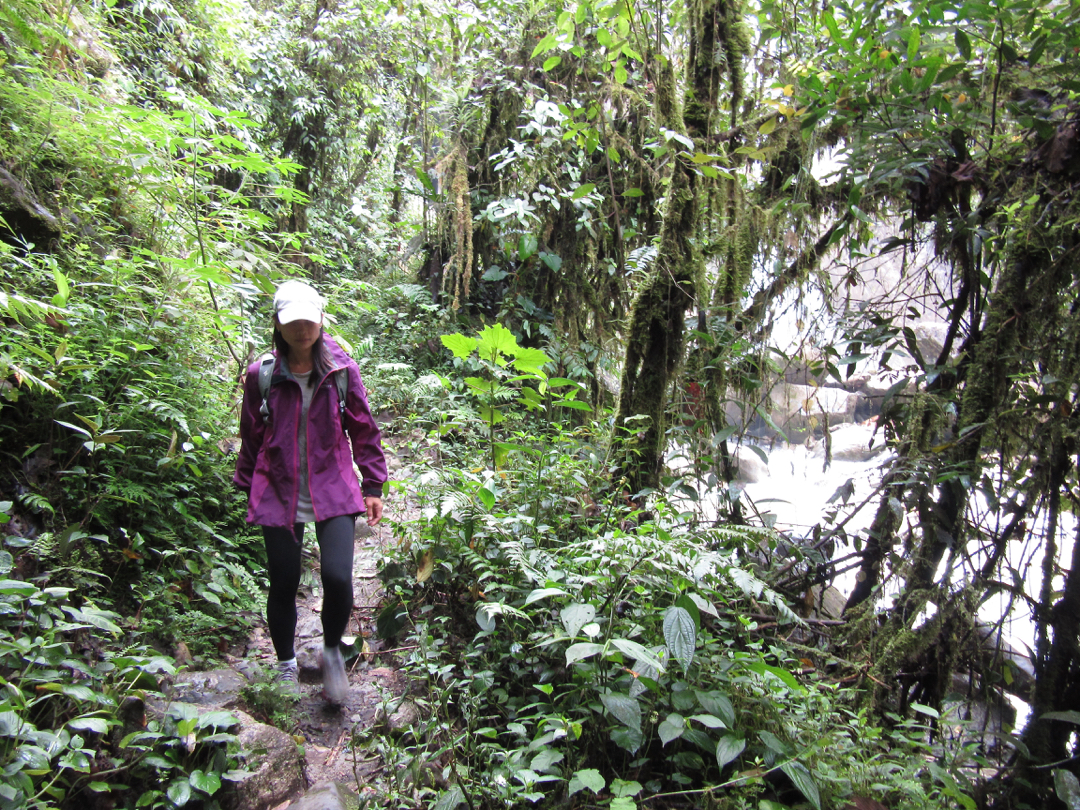
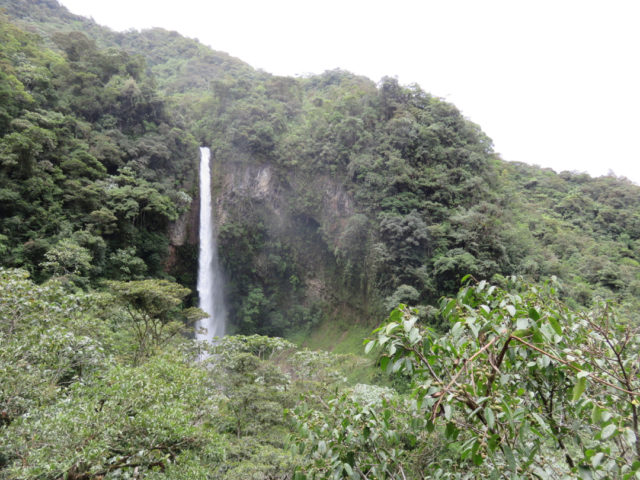
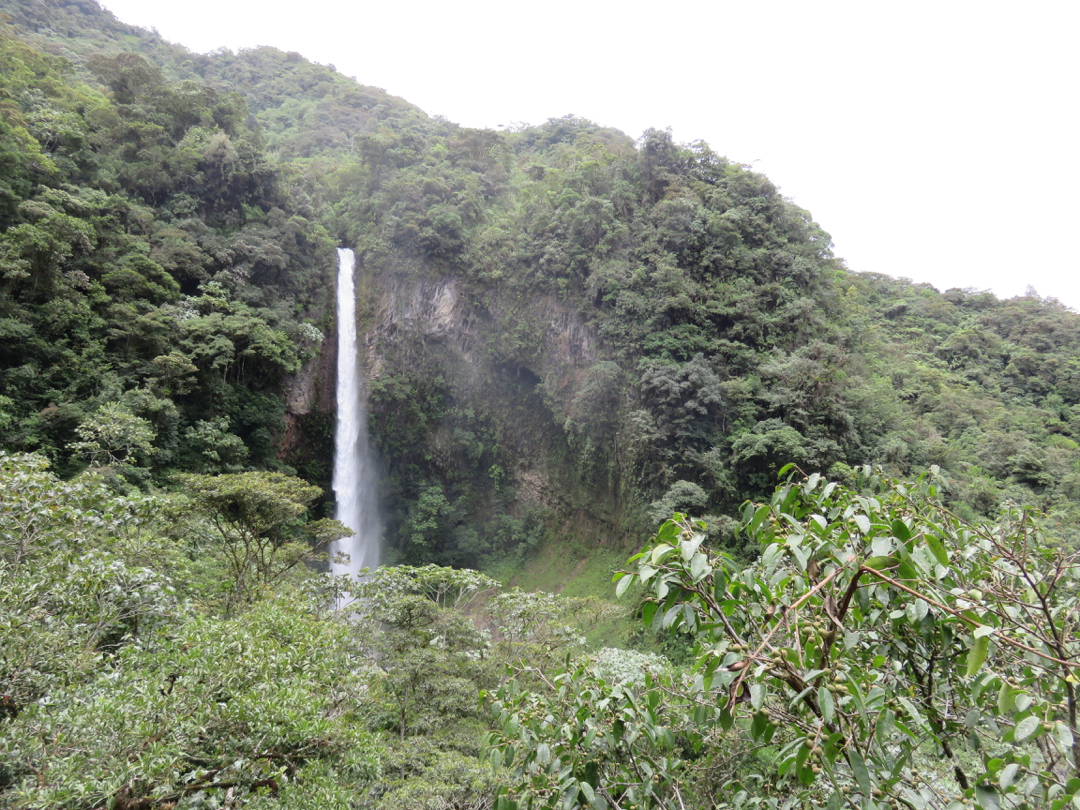
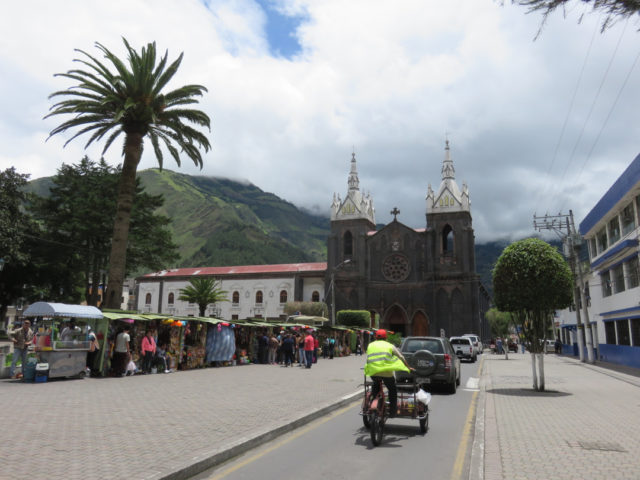
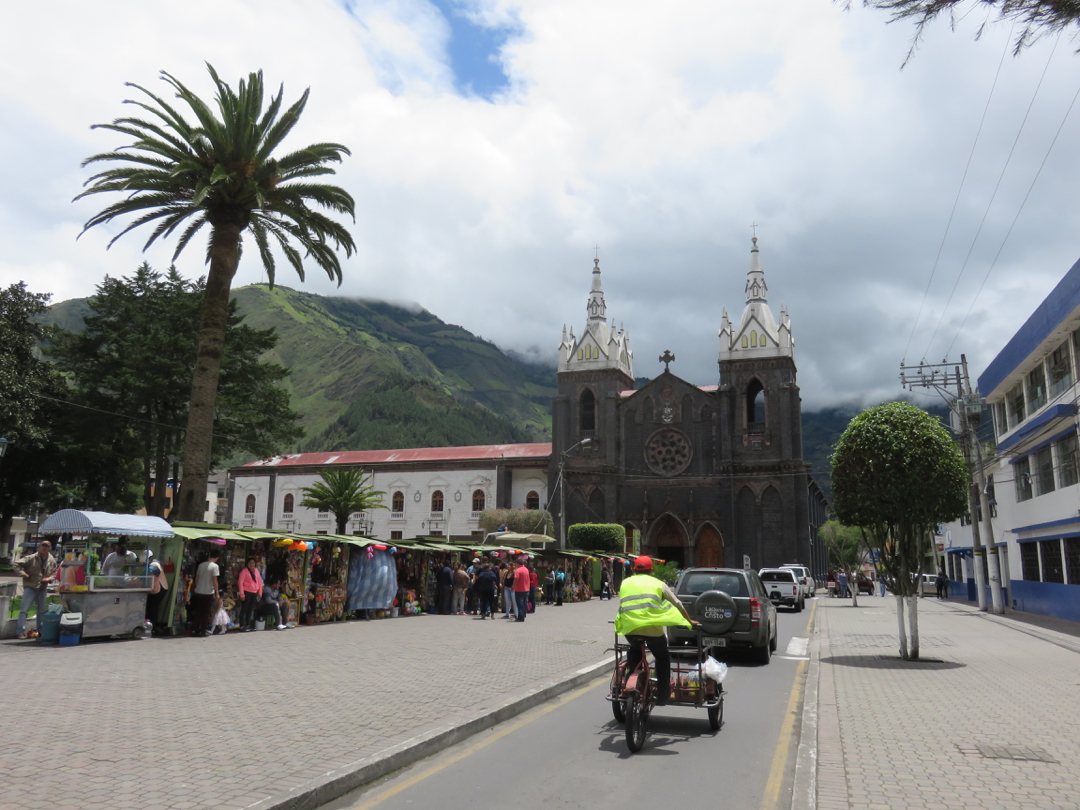
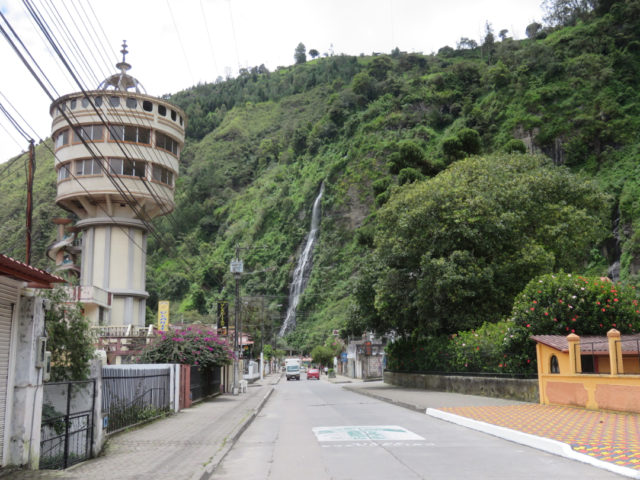
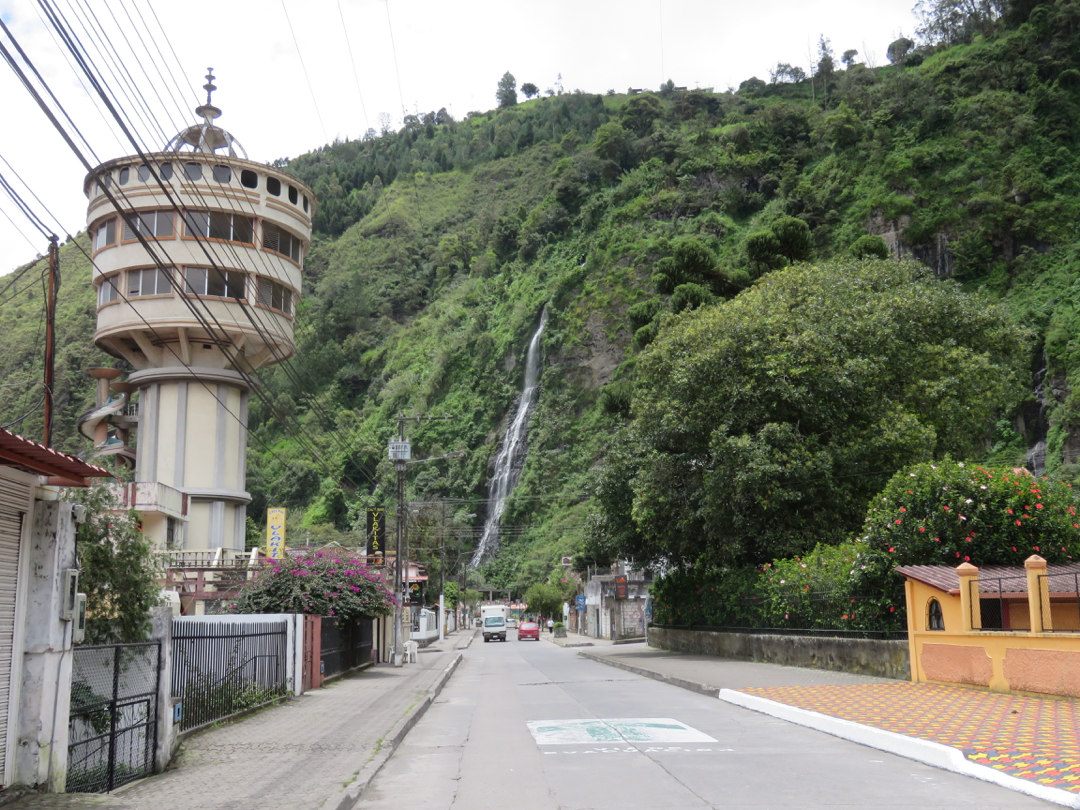
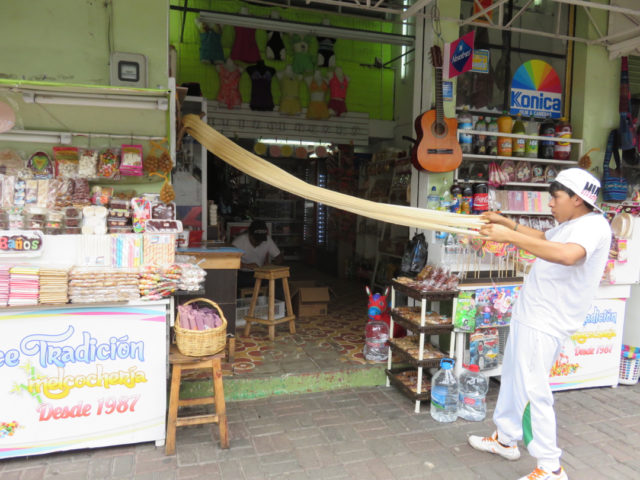
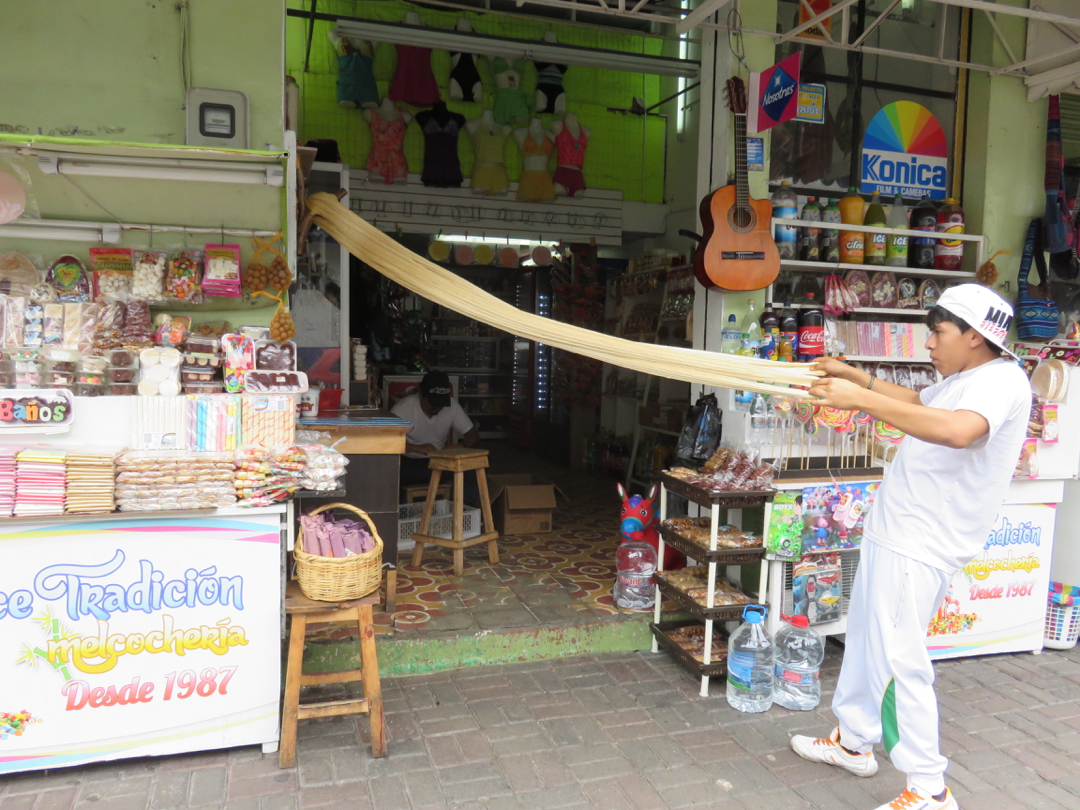

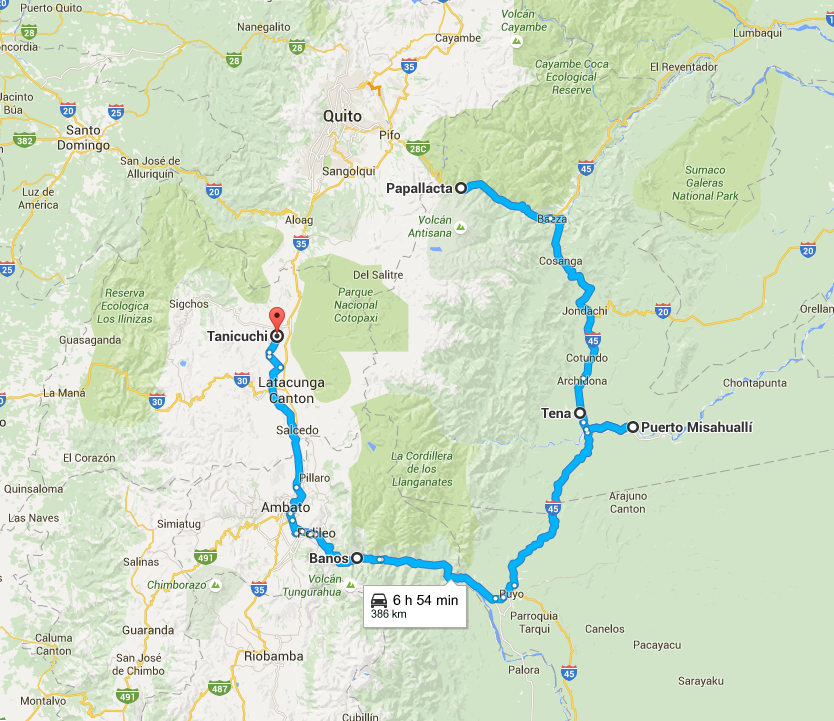

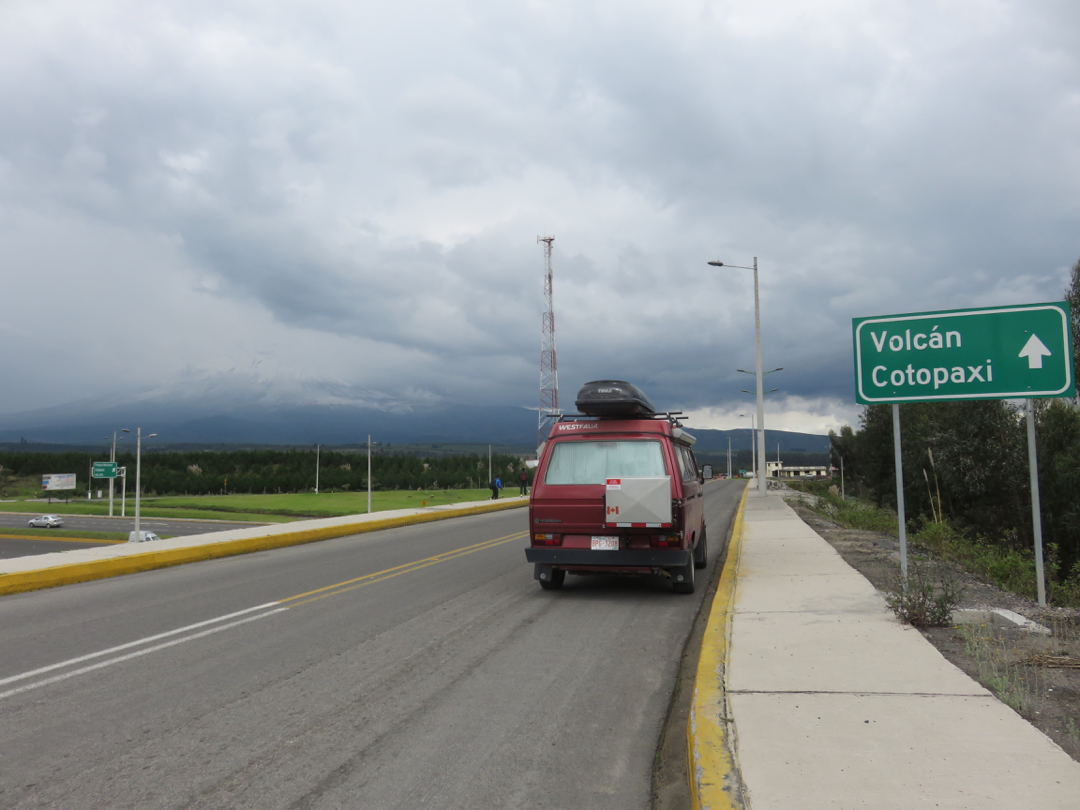
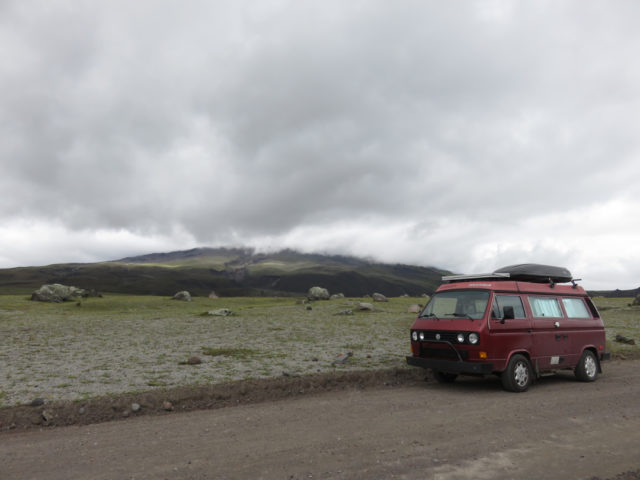

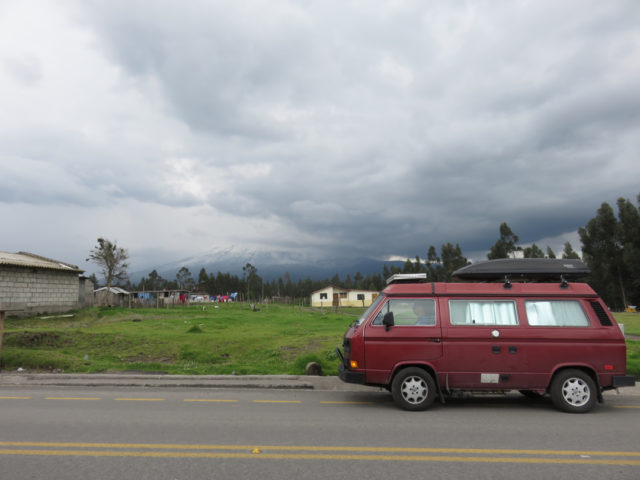
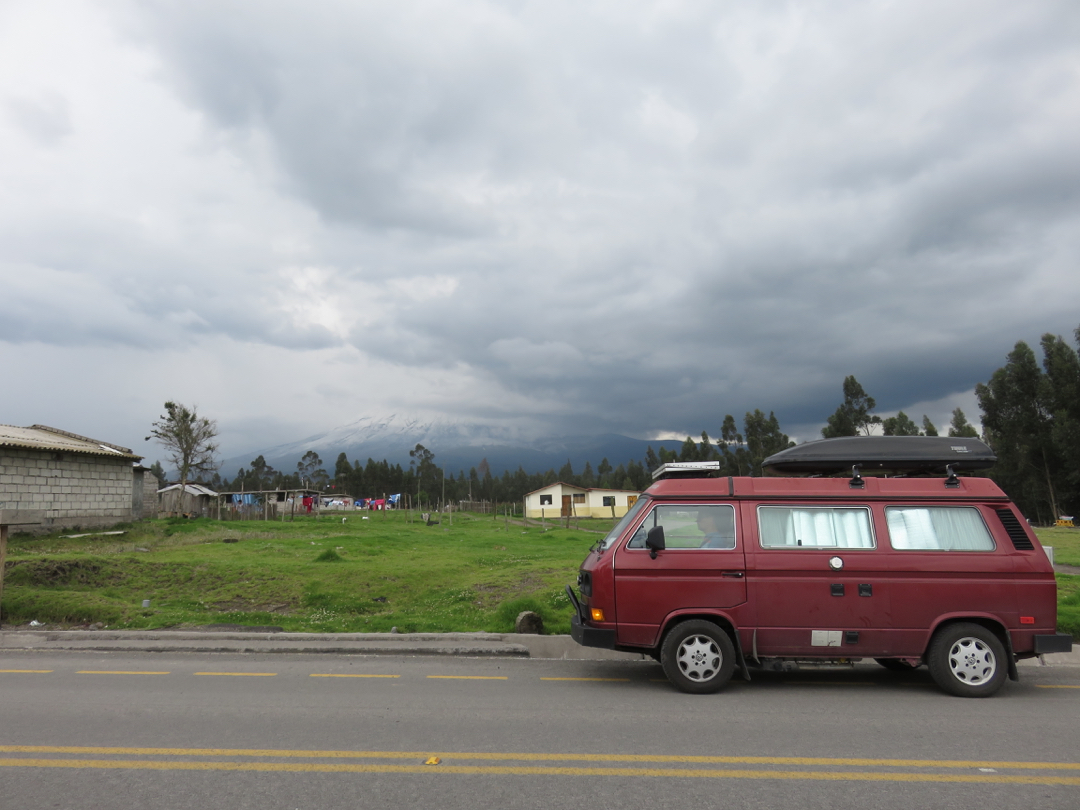

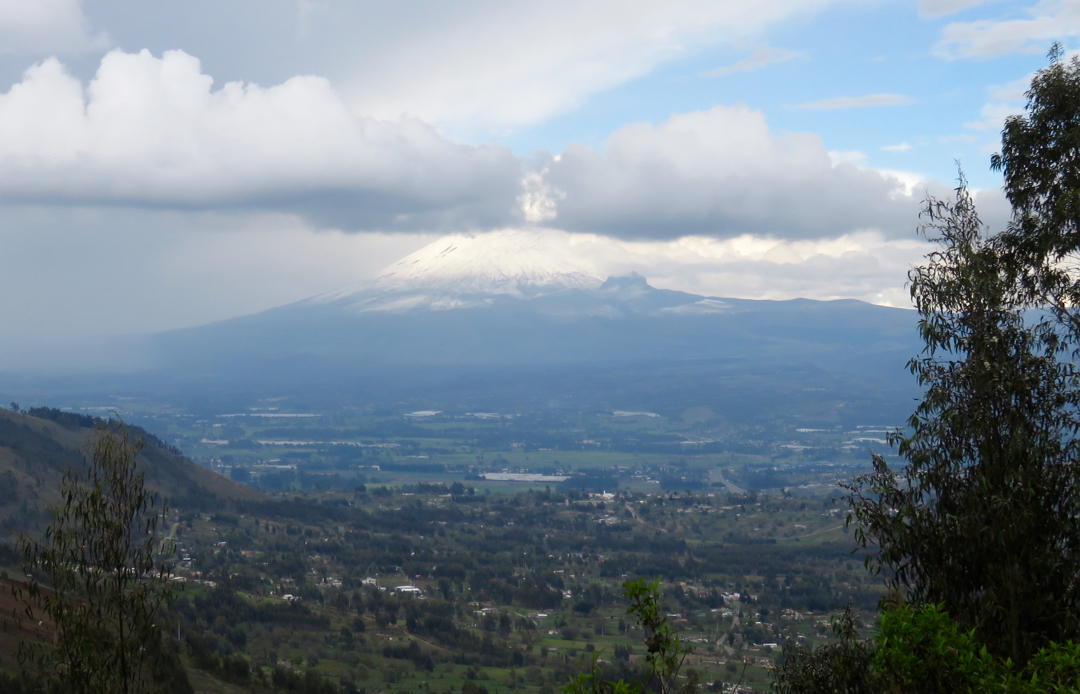

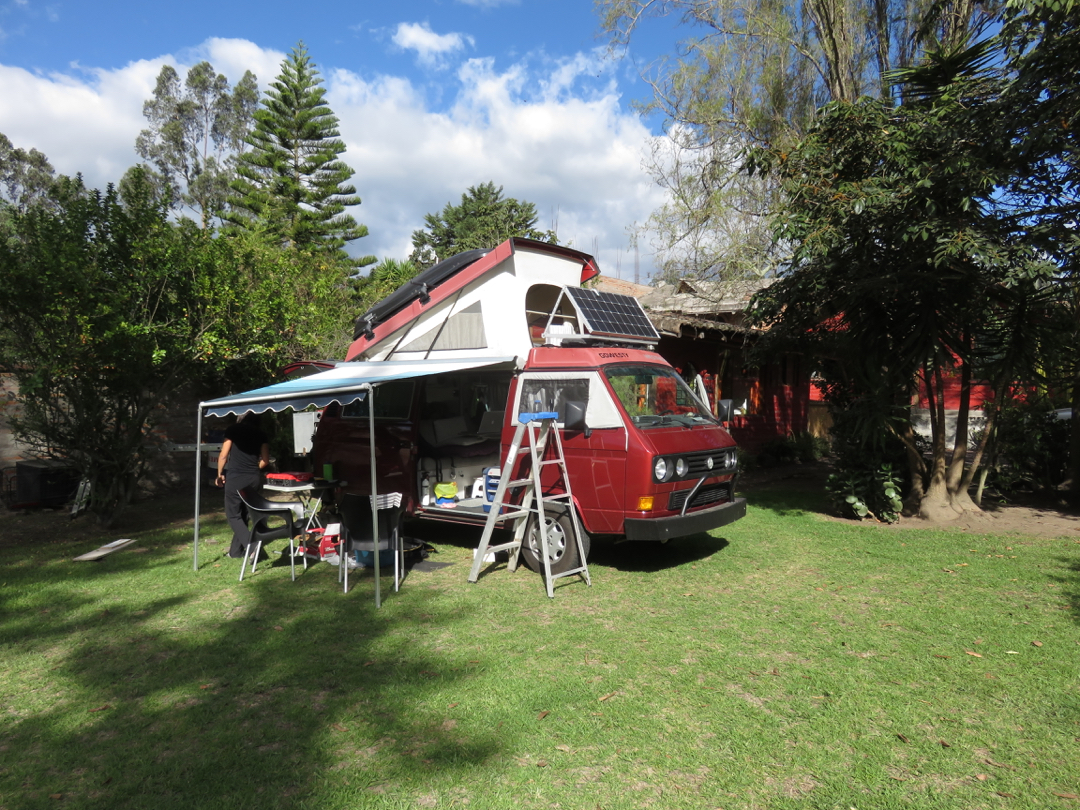
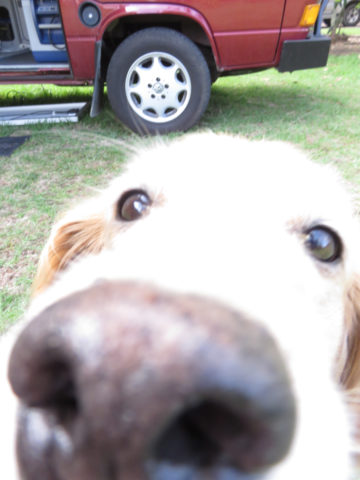

I always love hearing your stories. I especially love that the guy in the ticket booth knew where you had to go to get the permit that you needed. Meant to be!
My favourite pic is the one of you eating the best empanada! It looked delicious!
Love you guys!
We never know what to expect here, even when other people tell us what to expect! Like that guy in the booth and the empanada lady. Someone told us she made really good empanadas but we didn’t expect them to be so fresh and delish. Hugs, and thanks for reading!
Thank you so much for keeping others in your tribe informed and entertained!
Much love!
We wish some of our tribe was with us. You, Ev, and Betty Blue can still catch up! Love you lots 🙂
What beautiful pictures please keep them coming . You wear many hats (or coveralls with flip flops ) while traveling , just think of all the exercise your getting loading and unloading your gear above the engine compartment .
Ha, ha! Yeah, we’re going to patent our exercise routine and call it “Vanaerobics”. Coveralls and flip flops optional.
Groundhog Day? Glad it all turns out in the end. Missing you but loving all your stories. Carry on…
Hugs! Ev
Groundhog Day, indeed! Sometimes our travels are not as glamorous as we think they’re supposed to be. Glad that you’re still enjoying the stories! Hugs and happy thoughts from me and Gregor 🙂
I feel like I could rebuild a VW after reading this. Part travel blog, part VW repair tutorial. Great read.
We’re glad that somebody is benefiting from our misadventures!